
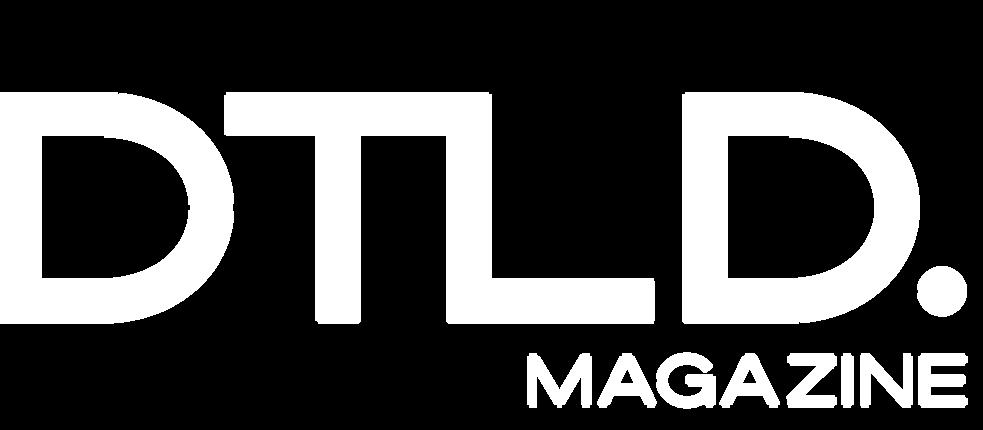



DTLD Magazine is a digital publication, created by INICIO Creative Agency, bridging the gap between business and creativity This publication is designed to bring entrepreneurs business advice and news in a new, fresh, and exciting way
DTLD Magazine is here to provide the latest information that will take you to the next level in your professional life We hope this magazine opens your mind and allows you to think about things in new ways that bring forth innovative action toward your goals
Here at DTLD, we are committed to forging a path of our own, and we hope we can inspire you to do the same

"Detailed" Magazine is officially 6 months old and we are still so shocked by how much this magazine has traveled across the world
We are officially be read in 23 countries! We can't thank you enough for allowing us to share what we do best so you can go off and do what you do best with more knowledge in your back pocket
As we head into the second half of the year we urge you to start thinking ahead towards next year and really make moves NOW to get you where you want to be when starting 2024
We hope you enjoy Issue 03 and again, we thank you!
Happy reading
f r o m t h e e d i t o r

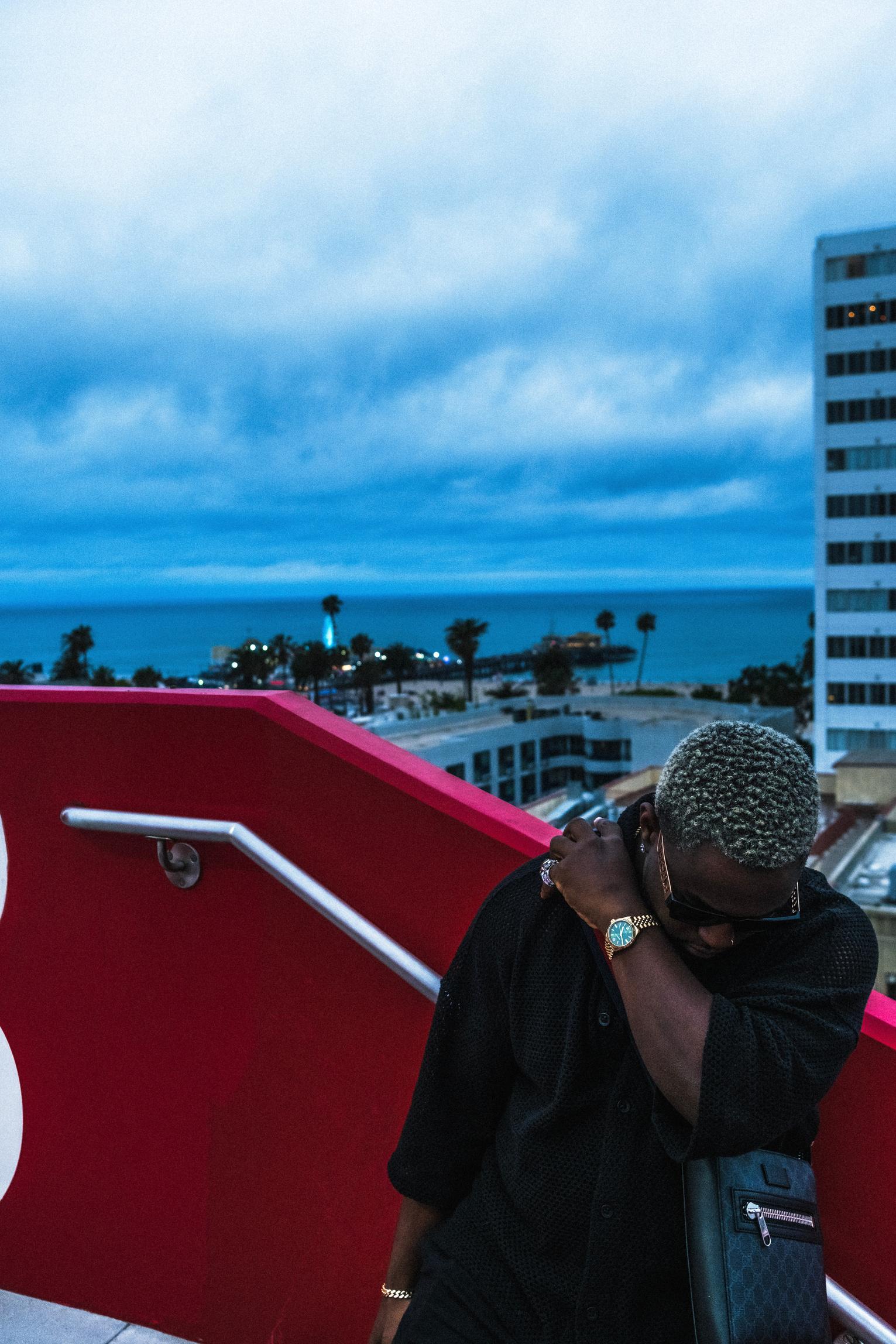
27


Business
Breaking Free from Toxic Entrepreneurial Habits
Transferrable Skills: Employee to CEO
Why Most Businesses Fail in the First Two Years + How to Succeed
Sales - The Bane of Most Business Owners' Existence
branding
Brand Trends for Q2
Brand Reputation is Your Greatest Currency for Scaling
Building a Personal Brand People Can't Resist
Increase ROI through Brand Consistency on Social Media
The Truth Behind White Labeling Services
52
marketing
Marketing Trends for Q2
The Email Marketing Comeback
Your DIY Guide to Search Engine Optimization
Nano-Influencers and the Power of Micro Reach
How to Network like a Boss for Increased Sales
creator focus
Justin Muzack
Kayla Janssen
Xavier Valdez
Vanessa Vander Pluym
Mark Daftari
Ariona Beninato
Art + Culture 127
Art + Culture Trends for Q2
The Evolution of In-Person Events
The Battle Between Artist + Output

Q3 Tools We Love

for all inquiries:
hello@dtldmag com
advertising@dtldmag com dtldmag com @dtldmag



In the fast-paced world of entrepreneurship, the term "hustle" has become synonymous with success. We admire those who burn the midnight oil, constantly pushing themselves to work harder and longer, with their eyes set solely on the prize But amidst the glorification of hustle culture lies a dark underbelly, where toxic habits threaten to erode our well-being and compromise our creativity and innovation.
As entrepreneurs, we must confront these destructive practices and rediscover a more balanced approach to achieving our goals

In the era of social media and startup fairytales, hustle culture has taken center stage We are bombarded with stories of entrepreneurs who sacrificed everything for their ventures and, in the process, achieved fame and fortune
Naturally, we yearn to emulate these success stories, believing that relentless work is the only path to greatness. But let's be honest; this obsession with constant productivity is far from sustainable
In recent years, toxic culture has gained prominence across various industries, including entrepreneurship. It is a phenomenon characterized by harmful attitudes, behaviors, and practices that negatively impact individuals and organizations
Toxic culture often emerges due to societal, economic, and psychological factors, and its rise in the entrepreneurial landscape is a cause for concern.
In today's hyper-connected world, where success stories and entrepreneurial achievements are widely celebrated, there is immense pressure on individuals to attain similar levels of accomplishment
The glorification of hustle culture, fueled by social media, portrays a relentless work ethic as the primary driver of success Entrepreneurs feel compelled to work harder, longer, and with an unwavering focus, leading to the adoption of toxic habits.

The fear of missing out on opportunities and advancements drives entrepreneurs to be in a state of hyperactivity constantly
In a highly competitive environment, where the market moves rapidly, entrepreneurs feel compelled to stay constantly connected and engaged, fearing that any momentary disconnection could lead to missed chances.
This has only accelerated with remote work taking the spotlight This work-from-home lifestyle has blurred the lines between personal and professional lives
Entrepreneurs often find themselves inundated with work-related emails, messages, and notifications around the clock. The pressure to be constantly available and responsive amplifies stress levels, leading to burnout and reduced overall wellbeing
Entrepreneurship is inherently challenging, and setbacks and failures are part of the journey. However, toxic culture propagates the belief that enduring immense suffering and sacrificing personal well-being are necessary to achieve greatness This "no pain, no gain" mentality disregards the importance of self-care and resilience
Toxic culture is reinforced by external sources such as certain media outlets, mentors, and peer groups. Some entrepreneurial narratives showcase founders who claim to have achieved success through sheer workaholism, inadvertently glorifying the toxic habits they adopted along the way

The pursuit of work-life balance is often seen as an unattainable goal in the entrepreneurial world The pressure to achieve success pushes entrepreneurs to prioritize work over personal life, inadvertently reinforcing toxic culture and disregarding the importance of overall wellbeing.
In addition, for many entrepreneurs, their sense of self-worth becomes deeply intertwined with the success of their ventures
This sense of identity tied to achievements creates a constant need for external validation, leading to an obsession with proving one's worth through work-related accomplishments
In the exhilarating yet demanding world of entrepreneurship, it's easy to get caught up in the allure of hustle culture and adopt toxic habits that hinder our overall well-being and long-term success Let's delve into some of the most common destructive patterns we, as entrepreneurs, tend to adopt:
Long Hours and Lack of Work-Life Balance
Entrepreneurship often demands relentless dedication, and we find ourselves working long hours, even sacrificing our personal lives in the process The boundary between work and personal time blurs, and soon, we're burning the candle at both ends. The consequence of this overworking mentality is an eventual burnout that leaves us physically and emotionally exhausted.
We fall into the trap of believing that success is directly proportional to the hours we put into our ventures.
The more we work, the more successful we'll be – or so we think However, this belief undermines the significance of efficiency and effectiveness In reality, overworking can lead to diminishing returns as our productivity dwindles and our decision-making abilities suffer.
Sacrificing Sleep, Exercise, and Proper Nutrition for Work
In the pursuit of entrepreneurial excellence, we often compromise on sleep, forgo regular exercise, and indulge in unhealthy eating habits. While this may seem like a small price for success, it severely affects our physical health and mental clarity.
Without adequate rest and nourishment, we become prone to illness and burnout, hindering our ability to perform at our best
Entrepreneurs are adept at handling highpressure situations, but we must not overlook the signs of stress and mental fatigue
Ignoring these warning signals leads to decreased productivity and reduced creativity and can even result in more significant health issues in the long run.
As entrepreneurs, we often equate our selfworth with external achievements and business success.
We seek validation from others, be it investors, customers, or the media, to validate our efforts This external validation becomes a dangerous source of validation, leaving us vulnerable to feelings of inadequacy when things don't go as planned.
The relentless pursuit of external validation can overshadow our personal growth and internal satisfaction
Focusing solely on achieving milestones blinds us to the importance of personal development and finding joy in the journey of entrepreneurship.
Pursuing perfection may seem admirable, but it often leads to delays and missed opportunities.
As entrepreneurs, we must recognize that perfection is an illusion and that progress and innovation thrive in an environment where experimentation and learning from failures are encouraged.


PHOTOGRAPHY: KIBBS STUDIOS


Congratulations on taking the bold step toward becoming a full-time entrepreneur! Moving from a 9-5 job to running your own business can be thrilling and rewarding, especially when you utilize everything you have going for you.
One key advantage you have is the arsenal of transferable skills accumulated during your career
By effectively marketing these skills and leveraging your previous experiences, you can significantly boost your chances of success in your new venture.
Transferable skills, also known as soft or portable skills, are the abilities, competencies, and attributes you have developed throughout your life and career
These skills can be applied in various settings and industries, making them valuable assets when transitioning from one role to another or from a corporate job to entrepreneurship.
Identifying your transferable skills requires a thoughtful self-assessment of your experiences, accomplishments, and the challenges you've overcome. Here's a stepby-step process to help you discover your transferable skills:
1 Reflect on Past Roles: Consider your previous job positions, internships, or volunteer work What tasks and responsibilities were you responsible for? Note down the skills you used to excel in those roles.
2. Evaluate Achievements: Consider your achievements and accomplishments at work and in other areas of your life What strengths did you utilize to achieve these milestones?

3 Seek Feedback: Reach out to colleagues, mentors, or friends who know you well and ask them for feedback on your strengths and skills. They might identify abilities that you may not have realized were transferrable
4 Analyze Personal Interests: Think about activities you enjoy doing in your personal life. These hobbies and interests may reveal valuable skills that can be adapted to your business.
5 Consider Cross-Functional Skills: Identify skills that are not specific to one job or industry but are widely applicable Examples include communication, problem-solving, teamwork, time management, and adaptability.
Once you've identified your transferable skills, the next step is to market them effectively across different industries:
1 Customize Your Marketing Approach: Tailor your marketing and offers to highlight the transferable skills that are most relevant to what you can capitalize on the most Showcase how your experience and abilities within your messaging, your knowledge, your content and conversations.
2 Create a Versatile LinkedIn Profile: Optimize your LinkedIn profile by focusing on transferable skills in your summary, headline, and experience sections Join industry-related groups and participate in discussions to network with professionals from various sectors.
3 Network Across Industries: Attend networking events, conferences, and webinars related to your target industries When networking, emphasize the skills relevant to the particular audience you're engaging with.
4. Develop a Portfolio or Website: Showcase your transferable skills through a portfolio or personal website. Include case studies, projects, or testimonials demonstrating how you've utilized your skills to achieve results
5 Be Adaptable and Flexible: During the growth process of your business, be prepared to adapt to multiple industries and clients, even if you lack industry-specific experience. Use real-life examples to demonstrate your ability to learn quickly and adapt
6 Emphasize Problem-Solving: Highlight your problem-solving skills as these are highly valued across industries. Clients are often more interested in someone who can tackle challenges effectively than someone with a narrow skill set.
7 Show Your Passion: Let your passion for learning and growing shine through in your interactions Be open about your desire to apply your skills in new ways and contribute to the success of the industry you're entering.
A few other key areas to lean into as you start the transition from employee to entrepreneur:
In the crowded entrepreneurial landscape, having a compelling Unique Selling Proposition (USP) is crucial.
Your USP is what sets you apart from your competitors and grabs the attention of potential clients
Draw from your professional background and experiences to craft a clear and concise statement about how your skills and expertise can benefit your target audience. Emphasize the value you can bring to their lives or businesses.
This is something to lean into time and time again with your marketing messaging
Consistently finding new ways to elaborate on how you are different helps position you in your industry and continues the push for standing out.
Your previous career has likely provided you with a network of contacts, colleagues, and mentors. Leverage this network to kickstart your new business. Reach out to relevant individuals who could be potential clients or collaborators Attend industry events and networking gatherings to make new connections and spread the word about your venture.
Personal referrals from trusted sources can be incredibly powerful in gaining early traction for your business

In today's age, having a strong online presence is vital for any business. Utilize your digital marketing skills, if applicable, to create an engaging website, optimize your social media channels, and develop valuable content that showcases your expertise
Share insightful articles, tutorials, or case studies that demonstrate your knowledge and problem-solving abilities. As you build your online brand, you'll attract likeminded clients who resonate with your experience and vision.
This is the time to truly master the art of content marketing and community building Those two areas are absolutely critical for the success of building a thriving business online.
Human beings are naturally drawn to stories
Use your previous experiences to create compelling narratives that highlight your journey from a corporate employee to an entrepreneur
Share your successes, challenges, and the lessons you've learned along the way. Authentic storytelling can create an emotional connection with your audience, fostering trust and loyalty towards your brand
While your transferable skills are valuable, remember that entrepreneurship is a continuous learning process. Stay open to new ideas, industry trends, and technological advancements Be willing to adapt your business model based on feedback and insights from your clients and the market This willingness to evolve will set you apart as a forwardthinking entrepreneur who can meet the evolving needs of your customers.
Transitioning from a 9-5 job to full-time entrepreneurship can be both exhilarating and challenging By marketing your transferable skills effectively and drawing upon your previous experiences, you can lay a strong foundation for your new business.
Most importantly, remain adaptable and committed to continuous learning, as these traits will fuel your growth as an entrepreneur Good luck on your journey to building a successful and fulfilling business!
Welcome to the exciting world of entrepreneurship! Starting a business is like embarking on a rollercoaster ride, filled with thrilling highs and challenging lows. However, it's crucial to acknowledge that not every entrepreneurial journey ends in success. According to various studies and real-life examples, businesses will most likely face failure within their first three years So, let's explore the reasons behind this unfortunate trend, backed by statistics and case studies.
But in our usual DTLD fashion, we'll also provide valuable tips and a proven strategy to build business revenue as quickly as possible, steering you away from the pitfalls that lead to failure

Starting a business is a bold move, but it comes with considerable risks. The harsh reality is that a significant number of new ventures don't make it past the threeyear mark Research conducted by the Small Business Administration (SBA) suggests that approximately 20% of new businesses fail within the first year, and roughly 50% close their doors by the end of the third year.
Insufficient Market Research: One of the primary culprits behind early business failures is the lack of thorough market research. Entrepreneurs often dive headfirst into a venture without adequately understanding their target audience, competition, or market trends. This oversight can lead to creating products or services that don't align with customer needs, ultimately leading to financial strain
Inadequate Capital: Insufficient funding is another significant reason for business failure. Many startups struggle to secure enough capital to sustain operations, especially during the initial stages when expenses may outweigh revenue Without a robust financial backup, businesses find it challenging to weather unexpected challenges
Poor Management and Planning: Strong leadership is vital for any successful business. Entrepreneurs who lack essential management skills or fail to develop a comprehensive business plan find themselves unable to adapt to changing circumstances, resulting in poor decisionmaking and failure
Competitive Landscape: Entering a crowded market without a unique value proposition can be detrimental to any business. Failure to stand out among competitors and provide a compelling reason for customers to choose your brand leads to stagnation and eventual failure
Lack of Marketing and Sales Strategy: Building a fantastic product or service is just one part of the equation. Without a robust marketing and sales strategy, even the most innovative offerings can remain hidden from the target audience, impeding growth and profitability
A real-life example of a business that succumbed to these common pitfalls is "FreshBites," a health-focused meal delivery service
The founders, eager to capitalize on the growing demand for nutritious meals, launched the company with limited market research While their product was indeed commendable, they failed to identify their precise target audience and struggled to compete with well-established meal kit services
Additionally, "FreshBites" underestimated the capital required to scale operations. Consequently, they couldn't sustain their operations during the early months when revenue was still growing
Lack of proper financial planning led to accumulating debts, ultimately leading to their demise.
Now that we've discussed the reasons behind business failures, it's essential to equip aspiring entrepreneurs with actionable strategies to increase their chances of success.
Here are some tips to avoid common pitfalls: Thorough Market Research: Dedicate ample time to understanding your target audience, market trends, and competition Conduct surveys, gather data, and analyze customer preferences to tailor your offerings accordingly.
Secure Adequate Funding: Before launching your business, ensure you have enough capital to cover initial expenses and sustain operations for at least six months Explore funding options like loans, investors, or crowdfunding
Effective Management: Develop strong leadership and management skills or surround yourself with a competent team. A clear vision, effective delegation, and a strategic approach to problem-solving are crucial for success.
Differentiation and Value: Set your business apart by offering a unique value proposition that solves your customers' pain points. Highlight what makes your brand special and why customers should choose you over competitors.
Create a Solid Marketing Plan: Craft a comprehensive marketing and sales strategy to promote your brand effectively Utilize social media, content marketing, SEO, and partnerships to build brand awareness and attract customers.
Model is a marketing framework that s four key elements essential for ful marketing strategies. The model is enhance the effectiveness of ng campaigns and is particularly when crafting marketing messages stomer-centric approaches Model was introduced by Robert F. orn, an American marketing or and consultant, in his 1990 article Marketing Litany: 4P's Passe; C-Words ver" Lauterborn recognized the dynamics in the marketing pe, where customer-centricity and ship-building became increasingly n achieving marketing success
The 4C Model was developed as a response to perceived limitations in the traditional 4P marketing mix (Product, Price, Place, and Promotion) and emphasizes customer needs and preferences more
Lauterborn believed that the 4P approach was too focused on the company's perspective and didn't adequately address customers' evolving needs and desires. The 4C Model aimed to provide businesses with a more relevant and customer-oriented framework for their marketing strategies by shifting the focus to the customer and incorporating cost, convenience, and communication
While avoiding failure is essential, entrepreneurs also strive for rapid revenue growth The 4C Model offers a proven strategy to achieve just that:
Since its introduction, the 4C Model has gained popularity among marketers and businesses seeking to create more customer-centric marketing campaigns and enhance overall customer experiences Its emphasis on understanding customers, addressing their needs, and building strong relationships has made it a valuable tool in modern marketing practices

demands.

Cost: Instead of just considering the price of products or services, the 4C Model emphasizes the overall cost to the customer, which includes not only the monetary price but also the time, effort, and potential sacrifices the customer might need to make to acquire the offering
Convenience: Convenience is about making the customer experience as smooth and hassle-free as possible. This element emphasizes providing easy access to products or services, straightforward purchasing processes, and excellent customer service to enhance satisfaction.
Communication: Communication in the 4C Model focuses on engaging with customers in a meaningful and relevant manner It involves open dialogue, active listening, and building relationships based on trust and transparency Effective communication ensures that the marketing messages align with the customers' interests and values
While the first three years of business can be tumultuous, understanding the reasons behind failures and implementing effective strategies are vital for success. By conducting comprehensive market research, securing adequate funding, emphasizing strong management, differentiating your brand, and adopting the 4C Model, you can navigate the treacherous waters of entrepreneurship and build a thriving, revenue-generating business Remember, the journey might be challenging, but the rewards are worth the effort So, dream big, plan meticulously, and embark on your entrepreneurial adventure with confidence!

Most business owners have no intentions of working in a sales field (and bring no sales experience to the table) But you have probably learned in your business by becoming the CEO; you are also the CSO (Chief Sales Officer).
And while most books, podcasts, or outdated training will have you chasing the nos, wondering what the magic sauce is, or staring in the mirror This is not the case
If you don't identify yourself as a door-todoor salesperson and have never planned on throwing a Tupperware party - that isn't the type of sales you will do as you grow your business
Sales, by definition, is "any transactions where money or value is exchanged for the ownership of a good or entitlement to a service" (Webster), but going deeper, there is a mindset that happens between the communication of the value of what you are offering and the person buying.
So where does an exchange of money or value for the ownership of goods because sleazy, icky, or gross?
Common advice that you hear is why you FEAR sales. The days of "don't take no for an answer," "handle all objections," and "buyers are liars" are what continue this narrative
You will ALWAYS be selling something, whether it is a physical product, your services, ideas to team members, or new changes in operations to the COO of your company.
This is all sales.
Sales IS communication Your business relies on your power to communicate the value and have people here for you
So how do you shift your mindset around sales?
First - your role in sales is not to get people to buy but to get them to a place where they know what they are buying and if they need it
This comes from clear communication, understanding your ideal client, and the marketing surrounding it.
In your role as a salesperson - you are serving other people It's not the game of you asking them questions and giving them NOTHING in return Instead, think of it as a two-way interaction - you are uncovering their needs, and they are getting to know you.
With this mindset, it's creating a customerfirst proactive process.
Traditional sales = make 100s of pitches, call back repeatedly, and don't take no for an answer
The depictions of Matilda's dad gluing on bumpers and arguing was all stuck in our brains, like some bad 2000s trend.
What if sales and your mindset around sales could be different?
Unfortunately, you are not a business owner in the 1950s or a door-to-door salesman. Your adoption of a sales process will change (yes, even if you are a product-based business owner).
Your sales process starts as soon as someone finds you through your social media or other marketing sources. You have one person with a goal and a problem you solve.
This is NOT targeting EVERYONE because you can help everyone. This is targeting an ideal customer with problems, fears, pains, and things they have tried, instead of what traditionally was demographics (where they live, what income they make, marital status, etc.)
Your goal of your marketing is to support your sales. Position your marketing to focus on that ideal client
This can include a variety of content to keep the consumers attracted to your product, service, or even idea
Your sales process is how you speak about your options while giving them chances to buy. If your person is looking for an easy solution to their problems, tell them you can solve them Since you aren't going door-to-door anymoreenter social media
The average person will follow 600 accounts on Instagram, spend 40+ minutes on Tik Tok and could see 10,000 ads in their day.
Your people are being sold to on a daily basis, so you can do the same
Before you get on the quest to find the perfect thing to say so people are lining up at your door to work with you, understand that selling one time or posting on social media one time doesn't produce results.

So how do you create a sales process to allow your customers to be first and still secure the bag?
We all have our own struggles, and as a company, you are solving them. I often see too many business owners focusing on speaking around the struggle and not being direct
"If you have ever " "Are you someone who " "Are you currently..."
Are all good starters to any sales or marketing content that focuses on calling out the problem and providing a solution, just like speaking to the solution with a before and after
Human brains love to make decisions, compare and have options. Giving a before and after allows someone to place themselves in a future where there is a solution.
On a conscious level, your person is modeling what could happen to them if they take action
In addition, repetition in the process, the words, and how you show up is equally as effective.
To be frank, the one time you sell doesn't matter It's the 42nd time, the 7th hour with the client, and the persistence of showing up daily
Too many founders get stuck in the trap of it being a one-hit wonder - that is not the case with sales.

Sales is built through hours of showing up and continuing to talk about it. The money is in the follow-up and the continued conversations.
Meghan is a corporate dropout turned multiple six-figure business owner After taking the last $200 in her bank account and creating multiple six-figure businesses in her first year, she learned the power of sales.
Meghan has taught sales to over 200+ entrepreneurs in the last three years, has had $100k+ launches, and has over eight years of experience in the sales space.
Meghan blends the power of sales psychology and behavioral economics to teach entrepreneurs how to scale their businesses and master their sales
When Meghan isn't working in her business, you can find her at the local coffee shop reading ALL the books. Meghan is an avid reader and hopes to write her own book one day.



EMOTIONAL BRANDING THROUGH MESSAGING

STRONG BUYER CUSTOMIZATION AND PERSONALIZATION

INCREASED AUTHENTICITY IN BRAND IDENTITY

DRIVEN BRANDING
BRANDS WHO MAKE A DIFFERENCE ON A LARGER SCALE IN SOCIETY

One of the most beneficial and opportunistic things you can focus on is building a solid brand reputation focused on the outcome of achieving sustainable growth and scaling your business.
A brand's reputation encompasses how it is perceived by consumers, stakeholders, and the broader market
Now, a reputation goes beyond how you show up and present yourself to your audience.
More so than not, your reputation always comes to light based on your movements and involvement behind the scenes.

Ultimately how you show up in your business and brand on and off the clock directly impacts your longevity
This article will explore why nurturing and protecting your brand reputation should be a top priority on your journey to scale new heights
A strong brand reputation establishes trust with your customers, creating a loyal customer base that becomes a valuable asset for scaling. When consumers are confident in your brand, they are more likely to choose your products or services over your competitors
Trust builds loyalty, which in turn generates repeat business and word-of-mouth referrals. Positive word-of-mouth can lead to organic growth, enabling you to scale faster and at a lower cost.
Furthermore, a well-regarded brand reputation gives you a competitive edge. It differentiates you from competitors and helps you stand out in crowded industries.
Customers often pay a premium for brands they trust and perceive as reputable By building a solid brand reputation, you can effectively position yourself as the preferred choice among your target audience, facilitating your scaling efforts.
One prominent example of a brand that lost the trust of its customer base is Volkswagen (VW) during the emissions scandal that emerged in 2015
Volkswagen, a renowned automotive manufacturer, admitted to intentionally installing software known as "defeat devices" in millions of its diesel vehicles to manipulate emissions tests
The software allowed the vehicles to pass emissions tests while emitting pollutants far exceeding legal limits during regular driving conditions.
This revelation significantly eroded customer trust in Volkswagen.
The brand had long been associated with reliability, performance, and environmental consciousness; however, the deliberate deception shattered that perception and led to a loss of faith among customers.
The impact on customer trust was substantial VW owners felt betrayed and deceived, as they had chosen the brand based on its reputation for clean diesel technology
The incident also raised concerns about the environmental impact of VW's vehicles and the company's overall commitment to sustainability.
The fallout from the scandal included billions of dollars in fines, legal actions, and a massive global recall of affected vehicles
Additionally, the brand faced a decline in sales as customers looked for alternatives and competitors capitalized on the situation
To rebuild trust, Volkswagen initiated an extensive effort to rectify the situation The company implemented various measures, including recalls, settlements, and investing in electric vehicle technology. VW also launched campaigns to regain customer confidence and emphasize a renewed commitment to transparency and sustainability
Rebuilding customer trust in such a case requires consistent efforts over an extended period. Volkswagen's reputation suffered a severe blow, but the brand has taken steps toward regaining trust by addressing the issue head-on and making significant changes in its operations
The Volkswagen emissions scandal serves as a reminder of the importance of maintaining integrity, transparency, and ethical practices. It demonstrates how a loss of customer trust can have farreaching consequences for a brand, necessitating substantial efforts to restore confidence and rebuild relationships with the customer base

A positive brand reputation extends beyond your customer base and impacts your ability to attract top talent and forge strategic partnerships. Talented professionals seek to work for companies with a strong reputation and are known for their integrity, innovation, and positive workplace culture When scaling your business, having the right team in place is crucial, and a reputable brand can attract top-tier talent eager to be associated with your success.
Moreover, brand reputation is vital in forming strategic partnerships with other businesses Well-established brands are considered reliable and trustworthy partners, making securing collaborations, joint ventures, and partnership agreements easier. This can provide opportunities for increased market reach, access to new resources, and accelerated growth. A brand we can reference that lost trust with its audience based on a bad strategic partnership is Nike's collaboration with cyclist Lance Armstrong
Nike, a global leader in athletic footwear and apparel, had a long-standing partnership with Lance Armstrong, a professional cyclist and cancer survivor
Armstrong achieved tremendous success, winning the Tour de France seven times, all while representing Nike and promoting their products.
However, in 2012, Armstrong was stripped of his titles and banned from professional cycling after an investigation conducted by the United States Anti-Doping Agency (USADA) concluded that he had engaged in systematic doping throughout his career. This revelation profoundly damaged Armstrong's reputation and had a significant impact on Nike as well
The collaboration between Nike and Armstrong was seen as a symbol of inspiration, perseverance, and triumph over adversity. The revelation of his use of performance-enhancing drugs shattered the narrative and trust built around Armstrong and the partnership. Nike faced backlash from consumers and stakeholders who felt deceived and misled
In response to the controversy, Nike terminated its contract with Armstrong and publicly distanced itself from the athlete The brand also addressed the issue by emphasizing its commitment to fair play and integrity in sports
The fallout from this collaboration gone wrong showed the importance of due diligence and ethical considerations when entering into partnerships Brands must carefully vet potential collaborators and ensure they align with their values and standards Failing to do so can lead to repetitional damage and disintegrate the audience's trust.
No business is immune to potential crises or adverse events, especially in 2023, where Cancel Culture runs deep However, a strong brand reputation can act as a shield, minimizing the impact of unfortunate circumstances on your scaling journey.
A crisis, if not handled properly, can cause significant harm to a brand's reputation and hinder growth prospects On the other hand, a well-regarded brand that has built trust over time will be better equipped to weather storms and emerge stronger.
A positive brand reputation also enhances customer retention. Customers who trust your brand are more likely to forgive occasional missteps, provided they believe your actions are genuine and align with their values By prioritizing your brand reputation, you can foster strong relationships with customers, increasing their lifetime value and fueling the growth of your business.
Chipotle was known for its commitment to fresh ingredients, customization, and a "Food with Integrity" mission focused on sourcing sustainably raised ingredients However, in 2015, multiple outbreaks of food-borne illnesses linked to Chipotle restaurants emerged, including cases of E. coli, norovirus, and salmonella. These incidents led to a widespread loss of trust among customers and a significant decline in sales
The food safety crisis severely tarnished Chipotle's reputation The outbreaks received significant media attention, resulting in negative headlines and public scrutiny. Customers, once loyal to the brand, became wary of dining at Chipotle due to concerns about food safety.
In response to the crisis, Chipotle took immediate action to address the issues and restore trust The company closed affected restaurants, implemented enhanced food safety protocols, and worked closely with health authorities to identify and rectify the root causes of the outbreaks.
Chipotle also launched a comprehensive marketing campaign focused on transparency, highlighting the steps taken to ensure food safety and regain customer confidence.
Despite these efforts, the road to recovery was challenging. Chipotle faced lawsuits, regulatory investigations, and a long process of rebuilding trust with its audience The crisis had a significant financial impact, with sales and stock prices plummeting.
The Chipotle food safety crisis serves as a powerful reminder of the importance of a robust crisis management strategy and the need for proactive measures to address and alleviate the impacts of a crisis.
Rebuilding trust after such an incident requires transparency, accountability, and a genuine commitment to resolving the underlying issues
The case of Chipotle highlights the critical role that trust plays in a brand's relationship with its audience.
Once trust is lost due to a crisis, brands must take swift and decisive action to rectify the situation, communicate transparently, and demonstrate a commitment to preventing future occurrences
Brand reputation has become the most valuable currency for scaling businesses.
It influences customers' trust, loyalty, and willingness to pay a premium for your offerings A positive reputation helps attract top talent, forge strategic partnerships, and navigate crises more effectively

Investing in building and protecting your brand reputation creates a solid foundation for scaling success.
As a brand strategist, I urge businesses to prioritize their brand reputation as a strategic asset and integrate reputation management into their growth strategies
Your reputation is not just a byproduct of your business; it is a vital catalyst that propels your scaling efforts and secures your place as a market leader in the long run.
PHOTOGRAPHY: KIBBS STUDIOS

B U I L D I N G A
P E R S O N A L

B R A N D T H A T
P E O P L E
C A N ' T
R E S I S T
This year, personal branding is at its peak in terms of importance Personal branding has taken off now more than ever as entrepreneurs and creatives are finding the ability to control their narrative to be a tremendous asset to their career endeavors.
While personal branding drives a greater capacity for brand growth and sales, the most significant component of its power lies in the ability to drive trust faster with your audience and stand out more quickly.
The driver behind its importance can be placed in the hiring process.
According to Zippia com, 92% of employers check social media
More specifically, 67% say they use social media sites to research potential job candidates.
Believe it or not, 54% of companies have eliminated a candidate based on their social media feed alone
With such a drastic statistic of social media being a representation that dictates your professional endeavors, having a personal brand has become the best way to build. To build a personal brand that instantly attracts an audience and community and drives sales into your business, focus on these five areas
For personal brands, niching down is a great way to scale and expand. Starting in a niche and expanding outwards is our best advice for anyone who gets hives when they hear the word "niche "

When building a brand off of your self and identity, you want to take up a lot of space in one area.
Because you are working with algorithms that will categorize you, you are working against short attention spans and poor memory
By occupying ample space in one category, you allow yourself to become known for something that helps your target audience remember you and seek you out
On the topic of target audiences, you also want to outline who you are speaking towards. We could case study so many creators and influencers with a primary audience they speak directly to, whether that's college students, entrepreneurs, aspiring life coaches, etc You want to get specific on who you want to bring into your world

This is so important because it drastically changes the way you speak and the messaging you will use.
If you are trying to target a younger demographic, you can get away with using slang and trends On the contrary, if you are targeting an older or more mature demographic, you will utilize proper grammar and make better vocabulary choices.
As you settle on your niche and target audience, create content that directly relates to both and watch your community grow
A solid personal brand is one that feels like your long-distance internet best friend. While there isn't a two-way conversation happening, you are so ingrained in their lives you know all about their spouses, kids, jobs, passions, habits, morning routine, skincare routine, and more
As unhealthy as it is, society leverages social media as an escape, and personal brands have leaned into this to give their audience more reason to seek out their content.
Are you someone who likes to empower and lift others, or are you someone who thrives off attention? In personal branding, there isn't a wrong answer, but it will dictate your brand growth.
Ultimately your personal brand should directly reflect who you are as a person, and the more authentic, the better.
If you are unfiltered and messy, show up that way If you are refined and structured, show up that way The growth will follow
A personal brand is still a business and requires a similar strategy As a personal brand, you have so many opportunities at your fingertips to not only monetize but to amplify your reach in your career or endeavors
With that, your content and your social presence should be strategic and intentional. This goes back to your niche and what you want to be known for.
At this point, we now plan how that translates into how you move and operate in this space
Do you want to monetize your personal brand? If so, how? Brand deals? Sponsorships? Affiliate marketing?
Do you want your personal brand to act as a resume or portfolio? How will this become visible? Do you plan on collaborations?
Do you want your personal brand to bleed into your business brand? If so, what does that look like, and how will you balance the two?
Create a plan and stay consistent.
Networking in the personal brand space is the greatest way to build brand perception and visibility. "Your network is your net worth."
Going to events, mixers, networking events, or speaking engagements are all goldmines for growing your network
In addition, collaborations and creating connections with complementary or likeminded individuals will help enhance your community and growth.
Networking has become so easy with social media, but if you're looking to take it further and incorporate in-person events, be sure to have business cards if you're old-school like us or a digital business card for our new-era readers

Lastly, one of the most critical aspects of building a personal brand… Engage with your audience!
This is a challenging and time-consuming part of brand building, but it's essential for a personal brand
Your community is the very reason you have a brand in the first place. Be sure to engage, comment back, respond to DMs if you can, and let your audience feel seen and appreciated by you.
Whether it's giveaways, shoutouts, meet and greets, etc. Get engaged with them. Personal branding can shift the entire trajectory of your career and profession. How you leverage it is entirely up to you, but the benefits are limitless Focus on being authentic and consistent and see what happens
Now more than ever, we are seeing all the ways for brands to leverage social media and foster brand loyalty.
To stand out online, maintaining brand consistency across various social media platforms has become a crucial strategy for success and has proven to lead to a greater return on investment.
To help you succeed in brand consistency, we will explore the significance of brand consistency on social media and delve into its benefits in terms of Return on Investment (ROI) Moreover, we will examine best practices to achieve brand consistency on Facebook, Instagram, Threads, TikTok, Pinterest, and Twitterthe leading platforms in the social media sphere

Brand consistency refers to the art of presenting a unified brand image across all touch points, including social media platforms
It involves aligning the brand's voice, visuals, values, and messaging cohesively. When executed effectively, brand consistency yields numerous benefits, chief among them being a substantial boost in ROI
Here's how:

Enhanced Brand Recognition: By consistently presenting the brand's logo, colors, and visual elements, consumers develop a strong association with the brand This heightened recognition translates into increased trust, making it more likely for customers to choose the brand over competitors
Improved Audience Engagement: Consistent brand messaging fosters familiarity and trust with the audience, leading to higher engagement rates Engaged followers are more likely to share content, leave positive reviews, and make repeat purchases, all of which contribute to a positive ROI
Streamlined Customer Experience: Brand consistency extends beyond aesthetics. A consistent tone of voice and messaging across social media platforms ensure that customers receive a seamless and unified experience, making them more likely to become loyal advocates of the brand.
Leveraging Emotional Connections: A consistent brand evokes emotions that resonate with the target audience. Emotionally connected customers are not only more loyal but also tend to spend more on products and services they feel connected to
Cost-Effectiveness: Establishing a consistent brand identity reduces the need for frequent overhauls and rebranding efforts, saving valuable time and resources This enables businesses to focus on creating meaningful content and engaging campaigns, ultimately leading to better ROI.
Facebook:
- Profile Picture and Cover Photo: Use the brand's logo as the profile picture, ensuring it is clear and easily recognizable even in a small thumbnail. The cover photo should reflect the brand's values and aesthetics.
- Content Strategy: Create a content mix that aligns with the brand's voice and goals Utilize a variety of post formats, including images, videos, and articles, to keep the audience engaged.
- Consistent Posting Schedule: Maintain a consistent posting schedule to keep the brand fresh in followers' minds without overwhelming them
Instagram:
- Unified Visual Theme: Utilize a consistent color palette, filters, and editing style to create a cohesive and visually appealing feed
- Instagram Stories: Use Instagram Stories to showcase behind-the-scenes content, promotions, and interactive elements to connect with the audience personally
- Hashtags: Create and employ branded hashtags to encourage user-generated content and build a community around the brand.
Threads:
Storytelling with Threads: Brands can leverage Threads to tell compelling stories that align with their brand's narrative and values Whether it's sharing the journey of a product launch, customer success stories, or behind-the-scenes insights, Threads help weave a coherent and engaging story.
Thought Leadership and Expertise: Brands can establish themselves as thought leaders within their industry by using Threads to share in-depth knowledge, tips, and insights This fosters trust and credibility among the audience, enhancing the brand's reputation.
Consistent Tone and Voice: Each tweet in a Thread should maintain a consistent tone and voice that resonates with the brand's personality This consistency reinforces the brand identity and strengthens its image in followers' minds
TikTok:
- Authenticity and Trends: Embrace TikTok's lighthearted and authentic nature while staying true to the brand's personality Engage with trending challenges and sounds to expand reach.
- Short and Snappy Content: Keep videos concise and engaging, ensuring they convey the brand message effectively within the platform's time limits
- Influencer Partnerships: Collaborate with TikTok influencers who align with the brand to tap into their established audiences
Pinterest:
- Optimized Pins: Create visually compelling pins that resonate with the target audience and include relevant keywords in descriptions to improve discoverability
- Themed Boards: Organize boards thematically, showcasing various aspects of the brand's offerings and values.
- Rich Pins: Utilize Rich Pins to display realtime information, such as product prices and availability, ensuring a seamless shopping experience
Twitter:
- Consistent Handle and Bio: Use the brand's name or recognizable handle to ensure the bio communicates the brand's essence
- Engage with Followers: Respond to mentions and direct messages promptly, fostering a sense of community and approachability.
- Visuals and Branded Content: Accompany tweets with eye-catching visuals and branded content to strengthen brand identity.
In the dynamic landscape of social media, brand consistency emerges as a potent weapon for businesses to establish themselves and drive as much as a 23% increase in ROI.
By aligning brand messaging, visuals, and values across all social media platforms, brands can unlock the full potential of social media marketing.

Embracing best practices and keeping a finger on the pulse of each platform empowers businesses to engage their audience, build lasting relationships, and achieve tangible returns on their social media investments.
As social media continues to evolve, the value of brand consistency remains constant, serving as a guiding star for brands navigating the online space.
It's no shock that small businesses face intense competition and the need for differentiation in the constantly moving business environment.
To thrive, entrepreneurs often explore innovative solutions like white-label services to expand their offerings without reinventing the wheel.
So before we delve into what whitelabel services entail and the pros and cons of integrating them into small businesses, let's break down what exactly white-label services are

White-label services refer to products or services created by one company and rebranded by another to appear as if they were developed in-house
Essentially, they allow small businesses to leverage existing products or services from third-party providers and offer them under their brand.
Engaging a white label service offers numerous advantages for businesses seeking to enhance their offerings and extend their capabilities Some of the key pros of hiring a white label service include:
1. Faster Time-to-Market: White label services provide businesses with ready-to-use solutions, eliminating the need for lengthy development processes This accelerated time-to-market enables businesses to swiftly introduce new products or services, gaining a competitive edge over their competitors.
2. Cost-Effective Solution: Building products or services from scratch can be costly, requiring substantial investments in research, development, and testing White label services offer a cost-effective alternative by leveraging existing solutions, allowing businesses to allocate their resources more
3. Expertise and Specialization: White label providers often specialize in specific industries or technologies, bringing valuable expertise and insights to the table By partnering with such providers, businesses can tap into specialized knowledge without the need to develop it in-house
4. Focus on Core Competencies: Outsourcing certain aspects of the business to white label partners enables companies to focus on their core competencies and strategic objectives It allows businesses to allocate their time and resources to areas where they excel, driving overall efficiency and growth
5 Access to a Diverse Product Portfolio: White label services offer a wide range of products and services that businesses can incorporate into their offerings. This diverse portfolio allows businesses to cater to a broader customer base and meet a variety of needs without significant upfront investments
6. Reduced Risk: Utilizing white label services can mitigate the risks associated with developing unproven products or services By working with established providers, businesses can rely on their track record of success and quality, reducing the likelihood of product or service failure.
7. Scalability and Flexibility: White label services are designed to scale seamlessly, allowing businesses to adapt quickly to changing market demands This scalability ensures that businesses can meet customer needs promptly without being hindered by capacity constraints
8. Enhanced Branding and Customization: While white label services offer pre-built solutions, they also allow for customization and branding under the business's name This enables companies to maintain a consistent brand identity and incorporate unique elements to match their target audience's preferences
9. Improved Customer Support: Reputable white label providers typically offer reliable customer support for the products or services they supply This ensures that businesses can deliver excellent customer experiences, enhancing their reputation and fostering customer loyalty
10. Competitive Edge: By integrating white label services into their offerings, businesses can gain a competitive advantage over competitors who might not have access to the same range of solutions This differentiation can lead to increased market share and stronger market positioning
While hiring a white label service can offer several benefits, it's important to consider the potential risks involved Here are some common risks associated with hiring a white label service:
1. Quality Control: Since you'll be relying on a third-party provider for your products or services, there is a risk that the quality may not meet your expectations or your customers' expectations Lack of quality control measures on the part of the white label provider can damage your brand reputation
2. Dependence on the Provider: By outsourcing a significant portion of your business operations to a white label service, you become dependent on their performance. If the provider experiences issues like financial instability, mismanagement, or shutdown, it could disrupt your business operations and potentially leave you without an alternative solution
3. Lack of Differentiation: White label services typically offer generic products or services that can be rebranded as your own. However, this means that you may face challenges in differentiating your offerings from those of your competitors who may be using the same or similar white label service Lack of uniqueness can impact your ability to stand out in the market.
4. Limited Customization: White label services often provide standardized solutions that may not fully align with your specific requirements or business model You may have limited control over the customization of the products or services, which can restrict your ability to tailor them to your target audience or to incorporate your brand's unique features.
5. Communication and Coordination
Challenges: When working with a white label provider, effective communication and coordination become crucial If there are language barriers, time zone differences, or lack of responsiveness from the provider, it can lead to delays, misunderstandings, and inefficiencies in delivering your products or services to customers.
6 Loss of Expertise: Outsourcing to a white label service means you may miss out on the opportunity to develop in-house expertise or domain knowledge in the particular area of your business. This can limit your ability to innovate, troubleshoot issues independently, or adapt quickly to market changes.
7. Security and Confidentiality: Sharing your business data, proprietary information, or customer details with a white label service involves certain security and confidentiality risks You need to ensure that the provider has robust data protection measures in place to safeguard your sensitive information.
To mitigate these risks, it is essential to thoroughly research and vet potential white label service providers, carefully evaluate their track record, review contracts and agreements, establish clear communication channels, and regularly monitor the quality and performance of the outsourced services.
Hiring a white label service can significantly benefit businesses by providing them with a cost-effective, efficient, and specialized approach to expanding their product offerings and improving customer experiences By leveraging the expertise and resources of white label partners, businesses can focus on their core strengths while meeting diverse customer needs, ultimately driving growth and success in the dynamic business landscape.






VALUE-CENTRIC MARKETING CAMPAIGNS
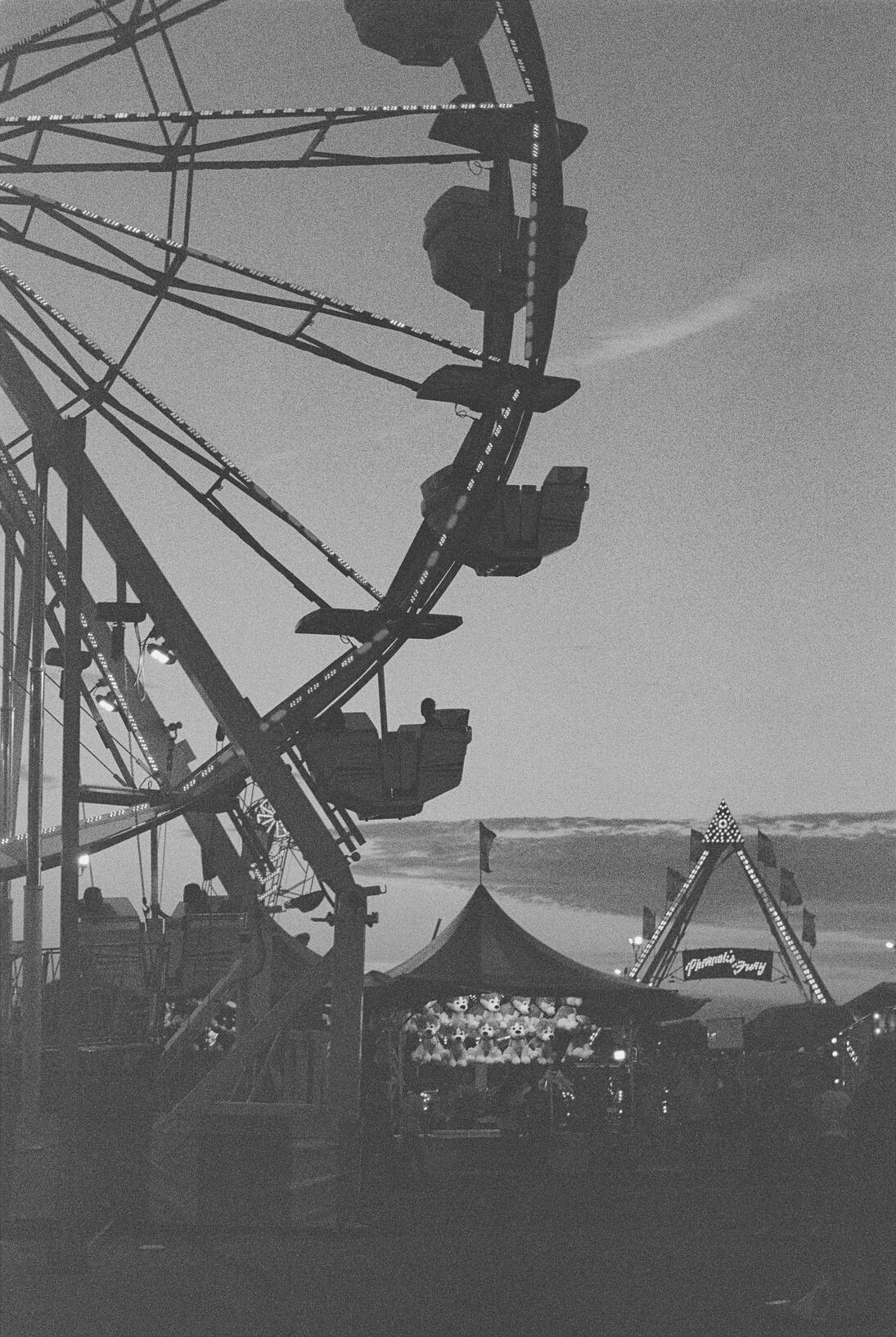
BRAND BUILDING AND PRODUCT AWARENESS THROUGH DEEPER CREATIVE EFFORTS TO STAND OUT
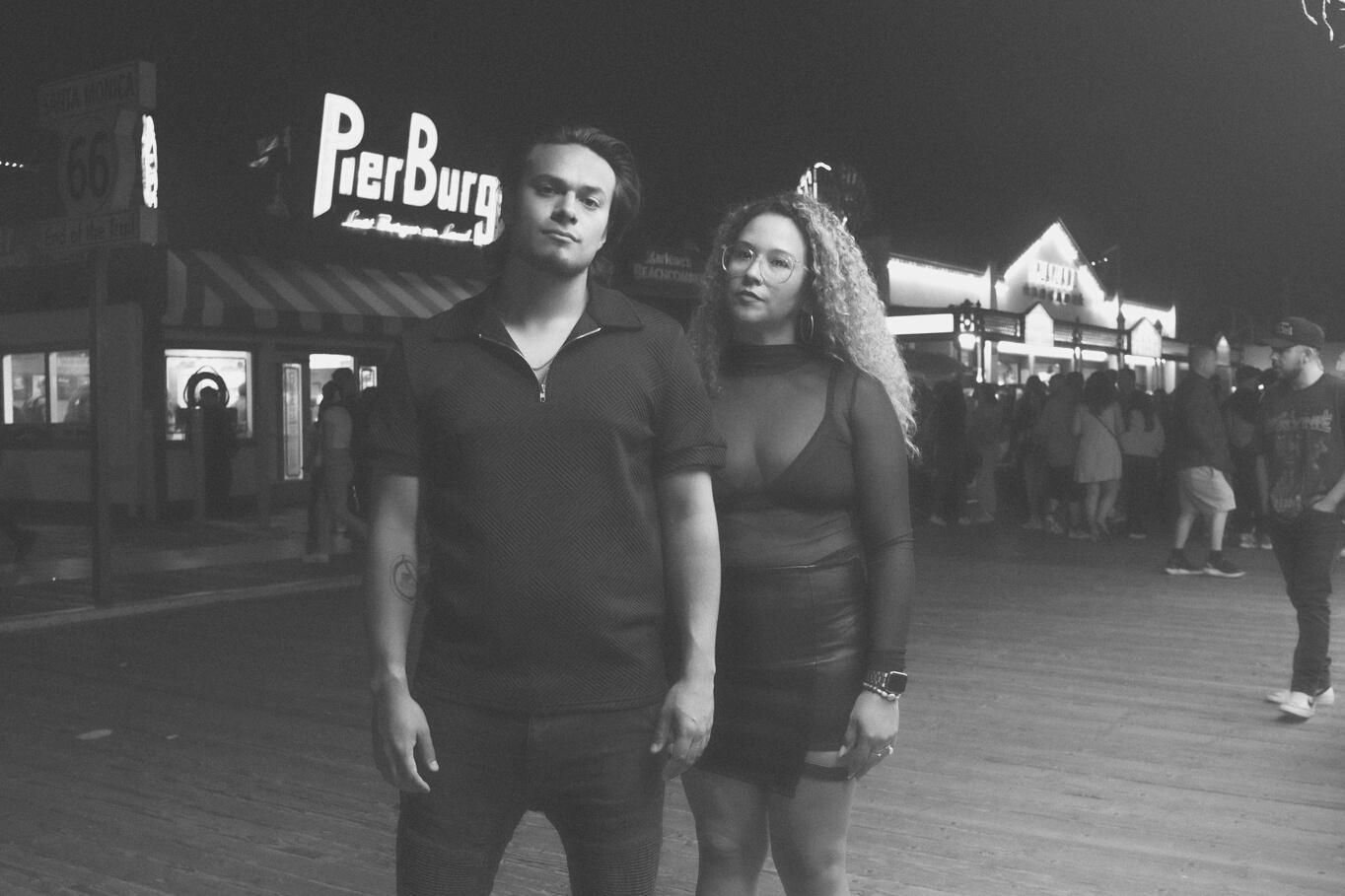
FURTHER EDUCATIONAL CONTENT ON THE ACTUAL SERVICE OR PRODUCT IS NEEDED FOR SALES
DEMAND-GENERATION IS OUT-PERFORMING LEADGENERATION
A NEED FOR BETTER MARKETING DATA ANALYSIS WITH HELP FROM AI FOR GREATER RESULTS

PHOTOGRAPHY: KIBBS STUDIOS
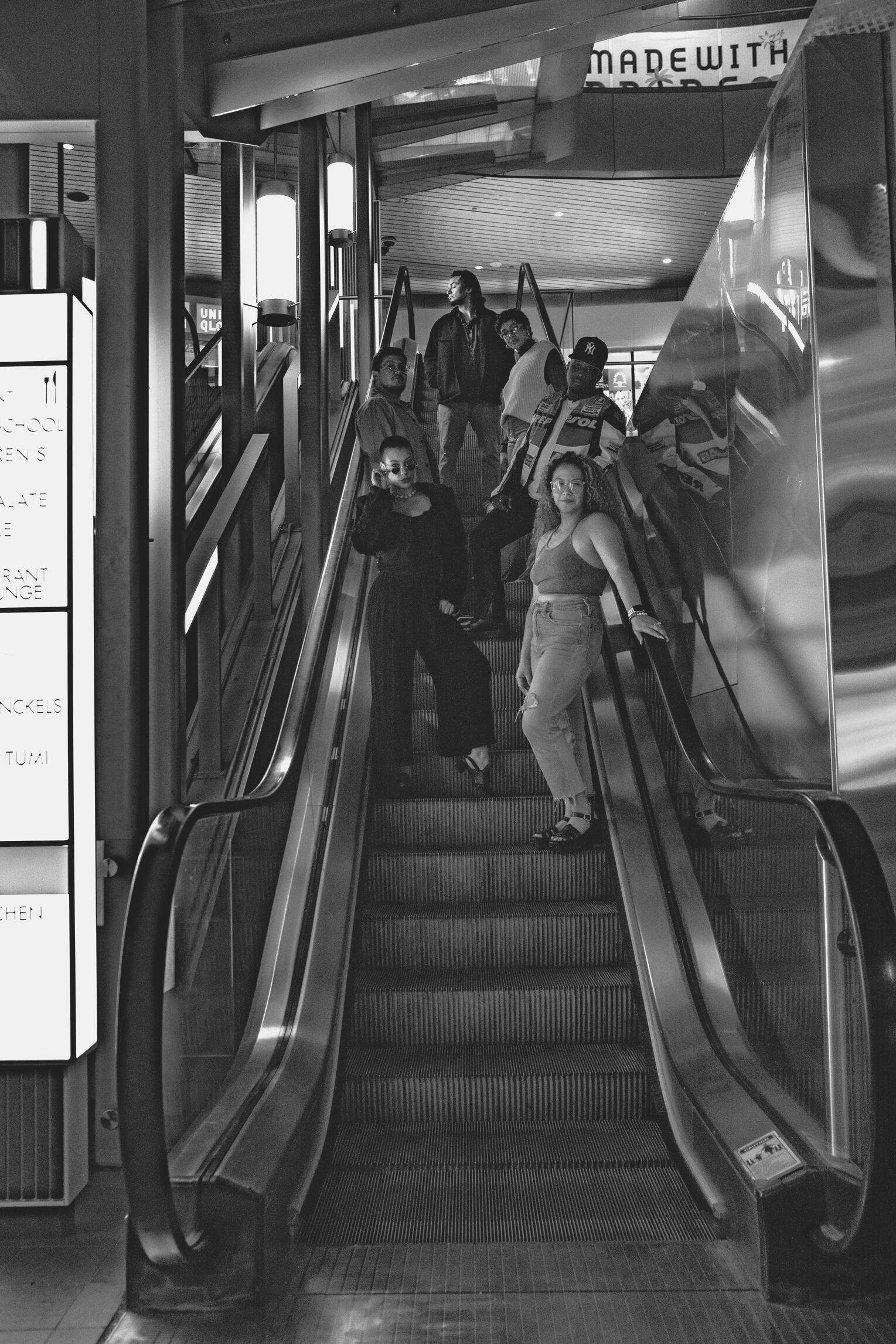

AAs we often see online, trends may come and go, but one strategy has proven its resilience time and time again: email marketing
While some may have dismissed it in favor of newer, flashier channels, email marketing has quietly experienced a remarkable resurgence, emerging as a potent tool for businesses to drive sales and foster customer relationships.
In this article, we delve into the comeback of email marketing and explore innovative strategies to leverage its power for increased sales in 2023

Email marketing has evolved significantly from its modest origins as simple text-based communication. Today, it is a sophisticated and personalized marketing tool with automation, artificial intelligence, and data analytics Its enduring success lies in its ability to engage with audiences in a targeted and individualized manner
As we've become increasingly numb to the monotony of social media content within the digital entrepreneurial realm, email marketing has stepped in to act as a more exclusive and intimate way to connect with your audience while providing resounding value

Customers today expect personalized experiences and relevant content. Email marketing gives businesses the opportunity to segment their audience and deliver tailored messages based on demographics, preferences, and behavior.
By providing personalized recommendations, targeted offers, and customized messaging, email marketing can cut through the noise and engage customers more individually, leading to increased open rates, click-through rates, and sales.
In recent years, we saw many entrepreneurs move away from email marketing as the demands of content marketing became a higher priority and a far more significant commitment Still, the advancements in automation tools this has made email marketing more efficient and effective than ever before.
Marketers can set up automated email campaigns, such as welcome series, abandoned cart reminders, or postpurchase follow-ups, to nurture leads and re-engage customers without manual intervention
Automation streamlines the process, saves time, and ensures that the right message reaches the right person at the right time.
It allows businesses to scale their email marketing efforts and maintain consistent communication with their audience, resulting in improved sales performance.
Like any other marketing strategy, your success lies in the data and numbers; presently, email marketing may present the most robust analytics and data-tracking capabilities
Marketers can track key metrics like open rates, click-through rates, conversion rates, and revenue generated, gaining valuable insights into the effectiveness of their email campaigns This data allows them to optimize their strategies, refine their messaging, and make data-backed decisions to increase sales and maximize ROI.

The key to email marketing's revival lies in its potential for personalization
In 2023, customers expect more than generic messages flooding their inboxes; they demand relevant and tailored experiences.
Businesses can craft highly targeted campaigns that resonate with individual recipients by segmenting email lists based on demographics, preferences, or purchase behavior. Personalization enhances engagement and drives conversion rates, leading to increased sales.
The Efficiency of Automation:
Automation has revolutionized email marketing by streamlining processes and enabling businesses to deliver timely and relevant content at scale. In 2023, the effective use of automation tools and workflows is crucial for marketers looking to boost sales
Automated emails, such as welcome sequences, abandoned cart reminders, and post-purchase follow-ups, can nurture leads, re-engage customers, and drive repeat purchases.
By implementing intelligent triggers and dynamic content, businesses can create highly personalized automated campaigns that capture attention and drive sales
Artificial Intelligence (AI) is no longer a futurisitic concept; it has become a game-changer for email marketing. AI-powered tools can analyze vast amounts of customer data, predict behavior, and deliver personalized recommendations, resulting in higher engagement and increased sales. In 2023, leveraging AI to optimize subject lines, create dynamic content, and determine optimal send times can give businesses a competitive edge in their email marketing efforts
Innovation is the lifeblood of successful marketing campaigns, and in 2023, interactivity is the key to captivating customers. Interactive emails enable recipients to engage directly with content within their inboxes, creating an immersive and engaging experience. By incorporating elements like quizzes, surveys, sliders, and add-to-cart buttons, businesses can drive higher click-through rates and encourage immediate action, ultimately leading to increased sales Experimenting with interactive elements allows businesses to stand out amidst the noise of crowded inboxes and grab their audience's attention
In the era of social media, user-generated content (UGC) has emerged as a powerful opportunity for building brand authenticity and trust. Integrating UGC into email marketing campaigns in 2023 can boost engagement and drive sales By encouraging customers to share their experiences and reviews with the brand on social media and curating the best content for email campaigns, businesses can add credibility and create a sense of community Testimonials, reviews, and user-generated images not only resonate with customers but also foster a stronger connection, increasing the likelihood of conversions

With the prevalence of smartphones, mobile optimization is no longer a luxury but a necessity In 2023, most email opens occur on mobile devices, making it imperative for businesses to create mobile-friendly email campaigns.
Responsive design, streamlined layouts, and concise yet impactful content are essential for capturing and retaining the attention of mobile users By optimizing emails for mobile, businesses can provide seamless experiences and ensure their messages reach customers anytime, anywhere, resulting in increased sales.

Amidst concerns about data privacy and online security, email has reestablished itself as a trusted communication channel With the rise of social media platforms and fake news, email provides a more reliable and secure environment for businesses to connect with their audience.
By delivering valuable content, adhering to anti-spam regulations, and respecting subscribers' privacy, businesses can build trust and foster authentic customer relationships, resulting in higher engagement and increased sales
As we navigate the ever-changing world of digital marketing, email marketing has emerged as a force to be reckoned with, capable of driving sales and nurturing lasting customer relationships.
By embracing personalization, automation, AI, interactivity, user-generated content, and mobile optimization, businesses can harness the true power of email marketing in 2023
As Forbes emphasizes, these innovative strategies are key to standing out, achieving unprecedented success, and boosting sales through email marketing


In an arena where competition is fierce, and attention spans are short, having a robust online presence is crucial for businesses Search Engine Optimization (SEO) has emerged as a powerful tool to help businesses improve their visibility, drive organic traffic, and ultimately achieve success in the online realm
In this article, we delve into what SEO is, why it is essential, how to utilize it in content marketing and website optimization and provide actionable steps for immediate implementation
SEO is the practice of optimizing websites and content to rank higher in search engine result pages (SERPs) organically. It involves a range of techniques and strategies aimed at improving the quality and relevance of a website, making it easier for search engines to understand and rank it accordingly
1 Enhanced Visibility: With billions of searches conducted daily, search engines are the primary gateway through which users discover new websites and content. By implementing SEO, businesses can increase their visibility and capture the attention of their target audience
2 Increased Organic Traffic: Ranking higher in search engine results drives more organic traffic to websites Organic traffic refers to users who find and visit a website through unpaid search results, making it a cost-effective and sustainable way to generate leads and conversions.
3 Credibility and Trust: Users tend to trust websites that rank higher in search results, as they perceive them to be more credible and authoritative By optimizing your website, you can establish trust with your audience, leading to higher engagement, longer browsing sessions, and increased chances of conversion.

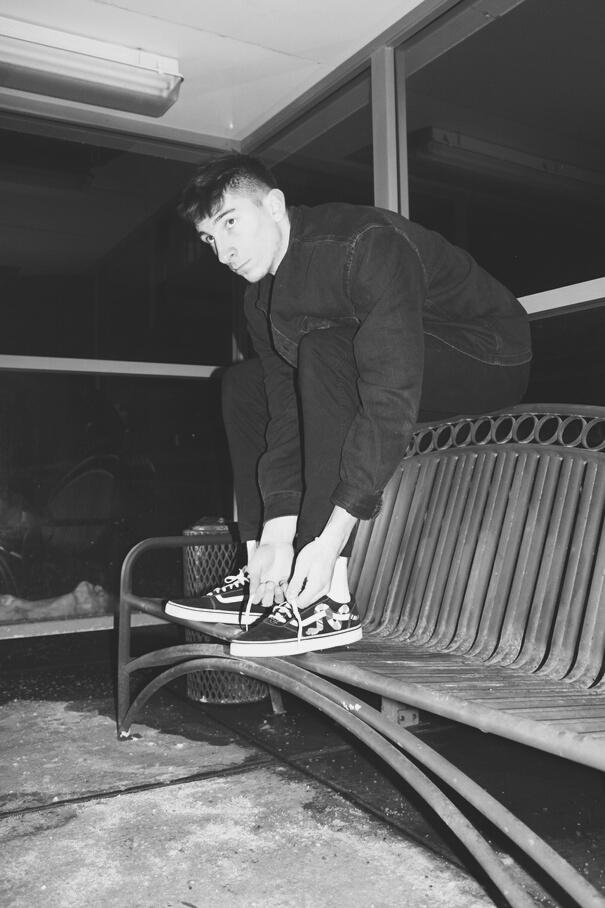
1. Keyword Research: Start by conducting comprehensive keyword research to identify relevant search terms and phrases that your target audience is using
Tools like Google Keyword Planner, SEMrush, and Moz Keyword Explorer can assist in this process. Incorporate these keywords naturally within your content to enhance its relevance and visibility to search engines.
2 High-Quality Content: Create original, informative, and engaging content that aligns with the search intent of your target audience
Craft well-structured articles, blog posts, videos, and other forms of content that provide value, answer questions and address pain points Search engines reward highquality content with higher rankings
3 On-Page Optimization: Optimize your content by strategically placing keywords in the title, headings, meta descriptions, and throughout the body of the text. Ensure your content is well-organized, easy to read, and includes relevant images, videos, and other media elements to enhance user experience
4 Link Building: Earn high-quality backlinks from reputable websites within your industry.
Link building helps establish your website's authority and improves its search rankings Focus on creating shareable content that other websites will naturally want to link to and actively reach out to industry influencers and bloggers for collaboration opportunities.
1. Technical SEO: Ensure your website is easily accessible and understandable by search engines Optimize your website's loading speed, mobile responsiveness, URL structure, XML sitemap, and robots txt file
Implement schema markup to provide additional context to search engines and improve your chances of appearing in rich snippets.
2 User Experience (UX): Create a seamless and intuitive user experience that encourages visitors to engage with your website
Improve navigation, readability, and accessibility. Make sure your website is mobile-friendly, as more and more users are accessing the internet via smartphones and tablets
3 Metadata and Title Tags: Craft compelling and keyword-rich meta titles and descriptions for each page on your website. These tags appear in search results and can significantly impact click-through rates. A well-optimized meta tag can increase the likelihood of users clicking on your link
4 Site Architecture: Organize your website's content into logical categories and create a clear site structure. This helps search engines understand the hierarchy and relationships between different pages on your site
Incorporate internal linking to guide users and search engines to important pages and improve their visibility
ndown and How to Implement
ehensive SEO audit of your website to provement
ng on your website keyword friendly? or search results?
d your images, graphics, and videos
ave a keyword-optimized web from
research to identify relevant and ds for your industry
ggest, Answer The Public, and where, and with these platforms, you to what is being searched the most.
e are some extremely valuable data ach keyword that helps you at the competition is like for each e assumed ranking position
ebsite's loading speed and mobile
e most commonly neglected areas ng from a social app to your site The eeds to be faster than the attention
ed to move someone off an app to then your site needs to be 10x more ocial media.
sh high-quality, keyword-optimized r basis.
content to post and be current? Or content to push brand visibility and become a leader?

strategy. How do you relay your eful information in the most
o push views and visibility (not the same as virality)?


Where influencer marketing is concerned, a new trend is emerging that challenges the traditional dominance of macroinfluencers
Nano-influencers, with their smaller yet highly engaged followings, are making a significant impact on the marketing landscape.
So let's break down the reasons behind the rise of nano-influencers, the importance of influencers in marketing, and how brands can leverage brand deals with nano-influencers for sustainable growth.
A nano-influencer is an individual who has a small social media following, typically ranging from a few hundred to a few thousand followers They have the smallest audience size among the various influencer categories, including macroinfluencers, micro-influencers, and nano-influencers.
Nano-influencers are known for their high level of authenticity, genuine passion for their niche, and close relationships with their followers
They often share personal stories, experiences, and recommendations, and their followers see them as trustworthy sources of information. Their content tends to be relatable and resonates with their small but dedicated following
Brands find value in partnering with nanoinfluencers because of their authentic and intimate connections with their audience.
By collaborating with nano-influencers, brands can tap into highly engaged communities and benefit from the word-ofmouth effect that nano-influencers often generate Additionally, since nanoinfluencers have smaller followings, they are often more accessible and willing to work with brands on a more personal level.
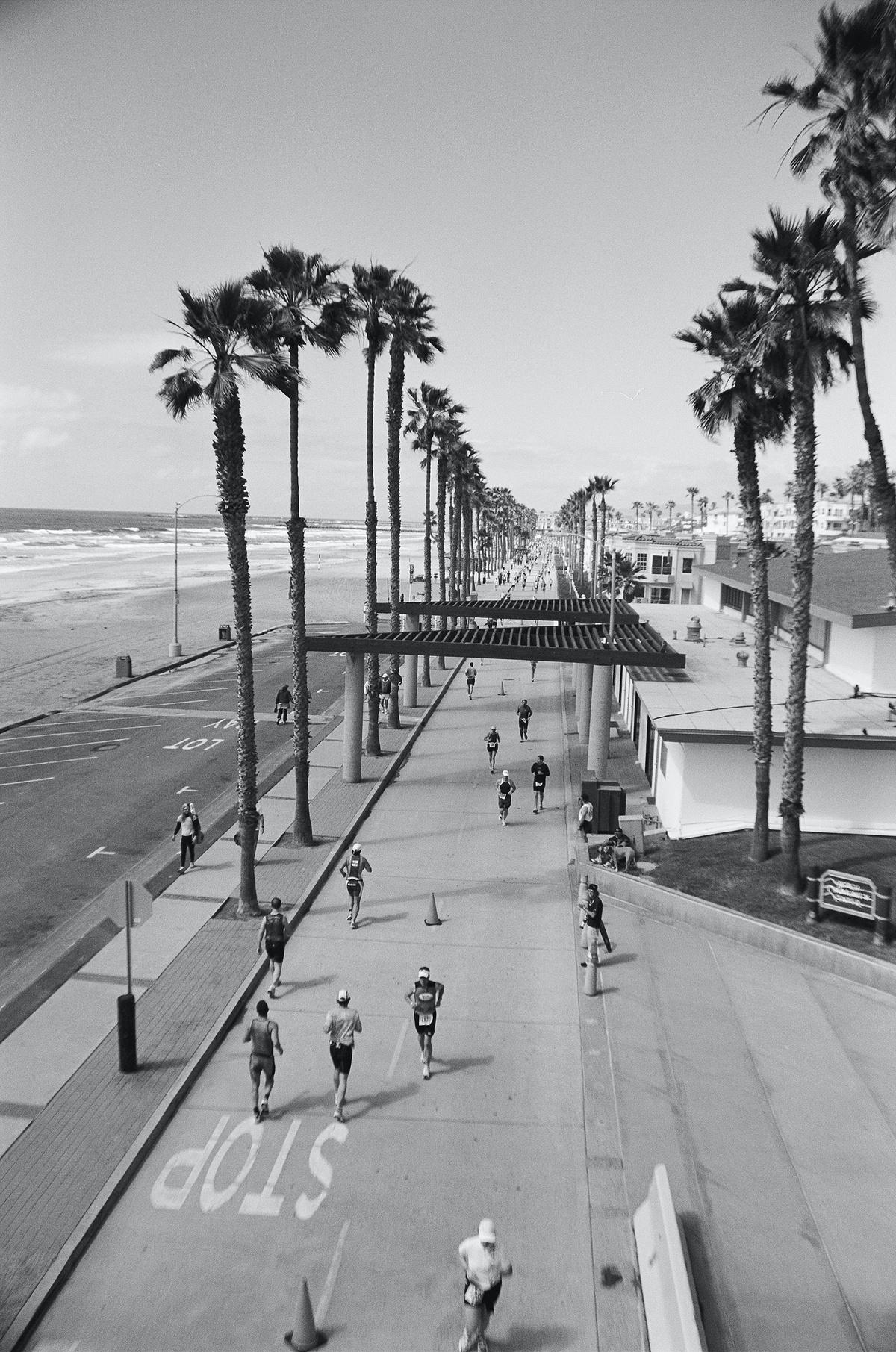
Nano-influencers can be influential for brands that target specific local markets, niche industries, or small communities Their impact may not be as widespread as macro or microinfluencers, but their recommendations can carry significant weight within their immediate circles.
Due to their smaller following, nano-influencers may not always monetize their influence like more significant influencers.
Instead, they may engage in collaborations through brand partnerships, product exchanges, affiliate marketing, or other non-monetary arrangements.


Nano-influencers possess an unmatched level of authenticity and relatability. Their smaller audience size allows for more personal and meaningful connections, fostering trust and influence over purchasing decisions. Followers see nano-influencers as genuine individuals with whom they can relate on a deeper level
Nano-influencers often have a hyper-localized reach or niche focus. Their influence extends to specific geographical areas or niche communities, making them ideal partners for brands seeking to target localized markets By leveraging the close-knit connections of nanoinfluencers, brands can effectively engage with specific consumer segments
Nano-influencers specialize in specific interests or industries, establishing themselves as experts in their chosen niches This expertise enables brands to reach highly targeted audiences and build credibility within those specific areas
Nano-influencers' recommendations carry significant weight among their followers, who perceive them as trusted sources of information
Nano-influencers often boast impressive engagement rates due to their content's personal nature and genuine connections with followers.
Their recommendations and endorsements generate more meaningful interactions, as followers see them as friends or peers rather than distant celebrities This heightened engagement drives higher conversion rates for brands.
Influencers bridge the gap between brands and consumers, leveraging their authenticity and personal connections to establish trust Influencer endorsements act as powerful social proof, influencing consumers' purchasing decisions and shaping brand perception.
Through influencers, brands gain access to diverse and targeted audiences that may be challenging to reach through traditional marketing methods.
Influencers' followers are often highly receptive to their recommendations, making influencer marketing an effective strategy for reaching specific consumer segments
Influencers excel at creating compelling content that resonates with their audience. By collaborating with influencers, brands can tap into their creativity, storytelling abilities, and unique perspectives to craft engaging brand narratives Influencers' content helps drive brand awareness and generate meaningful conversations around the brand
Influencers provide valuable insights into consumer preferences, trends, and feedback. By leveraging influencers as brand partners, brands can gain firsthand knowledge about their target audience, allowing for more informed decision-making and improved marketing strategies
When partnering with nano-influencers, it is essential to ensure alignment between the influencer's values and the brand's image Authenticity should be at the core of every collaboration, as followers can quickly detect inauthentic endorsements.
Brands must choose nano-influencers who genuinely resonate with their brand story and target audience
Clearly defining campaign objectives and aligning them with key performance indicators (KPIs) is crucial for success Whether the goal is brand awareness, driving sales, or increasing engag setting measurable targets allow track and evaluate the effectiven collaborations with nano-influen
Building long-term relationships influencers can be mutually ben nurturing these partnerships, bra benefit from sustained exposure brand loyalty, and ongoing colla Long-term partnerships help est consistency and familiarity with influencer's audience.
Implementing robust tracking a mechanisms enables brands to impact of influencer campaigns and make data-driven decisions metrics such as engagement rat conversions, and customer acqu evaluate the success of collabora optimize future strategies
Utilizing Authentic User-Genera
Nano-influencers can create use content that showcases the bran products or services authentical relatable.
In today's influencer marketing landscape, nano-influencers are rising in prominence due to their authenticity, hyper-localized impact, and niche expertise.
Brands can leverage nano-influencers' bli h i f l i
This content can be repurposed marketing channels to enhance visibility and connect with the ta audience

In a world with such a heavy push for virtual connection building, the value of in-person networking often gets overlooked.
However, there will never be a time in history that anything will beat the power of face-to-face interactions when it comes to building lasting relationships and fostering brand success.
In-person networking serves as the heartbeat of brand success for several vital reasons First and foremost, it establishes genuine connections with potential clients, partners, and influencers.
When individuals meet in person, they can read facial expressions, pick up on body language, and sense the authenticity of conversations These elements are vital for forging trust and credibility.
Additionally, networking events provide a platform for brands to showcase their uniqueness and personality
The real-time exchanges allow businesses to articulate their vision and values more effectively, leaving a lasting impression on attendees. In an era where consumers demand authenticity and human connection from brands, these face-to-face interactions create a memorable experience that sets businesses apart from the digital noise

For a brand to succeed, it must continuously grow and expand its network Networking events offer a concentrated pool of potential collaborators, clients, and partners, all in one place By attending these events, businesses can connect with decision-makers and industry influencers who can potentially propel their brand to new heights.
To start getting out to networking events, consider the following strategies:
1 Research Events: Identify networking events that align with your industry, niche, or target audience. Research their themes, attendees, and past outcomes to ensure they match your brand's goals and values. You can use your city's Chamber of Commerce, Facebook Events/Groups, Eventbrite, Meetup, and more
2 Embrace Diversity: Don't limit yourself to events that are exclusively within your niche Branch out and attend events in adjacent industries or areas of interest. This approach can spark unexpected collaborations and expand your brand's horizons.
3 Plan Ahead: Prepare a concise and impactful elevator pitch that encapsulates your brand's mission and unique selling points This will help you confidently present your business during conversations You will always be asked about yourself and your brand, so be prepared beforehand.
4. Be Approachable: Approach networking events with an open mind and a willingness to listen Feel free to strike up conversations with strangers and make a genuine effort to understand their needs and goals
5. Follow-Up: After the event, follow up with the contacts you've made. Connect with them on professional platforms like LinkedIn and send personalized follow-up emails to strengthen budding relationships
A lot of time, entrepreneurs in the digital realm have yet to tap into the power of inperson networking, which can be overwhelming and nerve-wracking. Improving in-person networking skills can significantly enhance your ability to build meaningful connections and grow personally and professionally
1. Set Clear Goals: Before attending networking events, define your objectives. Are you looking to meet new clients, find partners or collaborators, or expand your industry knowledge? Having clear goals will keep you focused and motivated during the event
2 Practice Active Listening: One of the most crucial aspects of networking is listening attentively to others. When engaged in a conversation, give the person your full attention, maintain eye contact, and show genuine interest in what they have to say Avoid interrupting and resist the temptation to check your phone or look around the room while talking to someone A pro tip is also to mirror their body language
3. Be Approachable: Present yourself in a friendly and approachable manner. Smile, offer a firm handshake, and maintain open body language A warm and welcoming demeanor will make others more inclined to engage with you
4. Find Common Ground: Seek common interests or topics to discuss with the people you meet. Building connections becomes more accessible when you bond over shared experiences or passions
5. Be a Problem Solver: Focus on how you can provide value or help others rather than solely promoting yourself. You position yourself as a valuable resource by showing a genuine interest in others' challenges and offering potential solutions
6 Prepare Questions: Have open-ended questions ready to initiate and maintain conversations. Questions like "What brought you to this event?" or "What are your goals for this year?" can be great icebreakers and help you delve deeper into meaningful discussions
7 Attend Workshops and Seminars: Participating in workshops and seminars allows you to engage with like-minded individuals in a more structured setting. These events often involve group discussions, providing you with valuable practice in networking and public speaking
8 Step Out of Your Comfort Zone: Push yourself to approach people you don't know or join group conversations. Remember that networking is about building relationships; sometimes, taking a small risk can lead to significant rewards
10. Reflect and Improve: After each networking event, take a moment to reflect on your experiences. Identify areas where you excelled and aspects that could be improved Continuously learning from each interaction will help refine your networking skills
Remember that becoming better at inperson networking is a gradual process. Embrace each opportunity to practice, learn from your experiences, and maintain a positive and proactive mindset As you build your networking skills, you'll discover that connecting with others becomes more natural and rewarding
After attending a networking event, your efforts should extend beyond the event to ensure you make the most of your connections and the opportunities that may arise
Here's a post-event checklist to help you maximize the benefits of attending a networking event:
1 Organize Your Contacts: Review the business cards or contact information you collected during the event Organize them in a way that makes follow-up and future reference easy You can use a CRM (Customer Relationship Management) tool or a simple spreadsheet to keep track of your contacts.
9 Be Authentic: Always be true to yourself when networking Authenticity shines through and helps you form more genuine connections.
2 Send Personalized Follow-Up Emails: Within 1-2 days after the event, send personalized follow-up emails to the people you connected with
6 Follow the Event Organizers: Connect with the event organizers and hosts on social media platforms like LinkedIn or Twitter Engaging with them can provide insights into future events and inform you about industry happenings.
7. Participate in Post-Event Discussions: Some events may have online forums or social media groups where attendees can continue discussions Participate in these discussions, share your insights, and engage with others who attended the event
Mention something specific from your conversation to jog their memory and express your gratitude for meeting them. Reinforce your interest in maintaining the relationship and offer your assistance if applicable
3 Connect on LinkedIn: If you haven't already, connect with your new contacts on LinkedIn. Include a personal message referencing the event and reminding them of your conversation. LinkedIn is a valuable platform for keeping in touch and nurturing professional relationships
4 Fulfill Promises: If you made any promises during the event, such as sharing resources or introducing your contacts to others, follow through on them promptly. Keeping your word demonstrates reliability and commitment.
5 Reflect on the Event: Take some time to reflect on the networking event What did you learn? Which connections were most valuable? What could you do differently next time to make the experience even better? Learning from each event ensures continuous improvement in your networking skills.
8. Reach Out to Potential Collaborators: If you identified potential collaborators or partners during the event, consider reaching out to explore collaboration opportunities further Collaborations can lead to mutual growth and success
9. Keep in Touch Periodically: Networking is not a one-time effort. To nurture your connections, periodically reach out to your network, share relevant content, congratulate them on achievements, or check in to see how they are doing
10 Evaluate the Event's Impact: Assess the event's impact on your objectives and goals Did it meet your expectations? Did you achieve your intended outcomes?
11. Plan for the Future: Based on your experience, update your networking strategy and plan for future events Set goals for the next event, identify events that align with your objectives and proactively seek networking opportunities
Remember that networking is a continuous process of building and maintaining relationships. By following up and staying engaged with your contacts, you can turn casual connections into meaningful, long-lasting professional relationships that may open doors to new opportunities in the future

As we approach 2024, the significance of in-person networking is set to soar even higher.
While digital channels will continue to play a vital role, the limitations of virtual connections have become apparent
To thrive in this competitive landscape, brands must integrate in-person networking as a core component of their marketing and growth strategies.
Here are some reasons why in-person networking will be pushed further in 2024:
1 Authenticity Reigns Supreme: Consumers in 2024 will be more discerning than ever, craving genuine connections with the brands they support. In-person networking allows businesses to create authentic relationships, which will be a differentiating factor in gaining customer loyalty.
2 Experience-Driven Marketing: The experience economy will continue to shape consumer preferences Networking events provide the perfect platform to create memorable and engaging experiences that resonate with attendees long after the event has ended.
3 Emotional Impact: Face-to-face interactions tap into the emotional aspect of communication Businesses can leverage this connection to tell their brand story in a compelling way, evoking emotions that stay with potential customers.
4 Collaboration and Innovation: Networking events foster collaboration and idea-sharing In 2024, businesses will increasingly recognize the power of collective intelligence and seek out networking opportunities to drive innovation.
5. Strengthening Industry Leadership: Thought leadership is crucial for building a strong brand image Businesses can position themselves as industry leaders by actively participating in networking events and sharing expertise.
In-person networking is the backbone of brand success, offering unparalleled opportunities for relationship-building, collaboration, and long-term growth
As marketing experts and publicists, we emphasize the significance of integrating faceto-face interactions into your brand's strategy, particularly as we approach 2024.
By researching relevant events, embracing diversity, planning ahead, and being approachable, businesses can start attending networking events and reap the benefits of authentic connections.
As the future unfolds, in-person networking will continue to drive brand success, enabling businesses to stand out in a crowded digital landscape and forge meaningful relationships that propel them to new heights


DM: Thank you so much for joining us! To start things off, do you mind telling us about yourself?
JM: Thank you for having me! It’s an honor and privilege, truly! Back in 2004, in middle school, I joined a drumline and competed all over Southern California which was the start of my musical journey. It led to me learning the altosaxophone and the piano during my 7th grade year I eventually got into Hip-Hop that year and began making music of my own Writing rhymes and making beats

I rapped all throughout high school doing competitions and showcases, but it wasn’t until I started college in 2011, I realized it wasn’t for me. I still made beats and released instrumental projects under my former name, THA F O R M U L A , but I fell in love with producing internet radio.
I had a knack for discovering talent and helping to put together the show I started on Syndicate Radio.
After working on the show from 2011-2016, I landed being an on camera host for Street Motivation magazine, which led me in 2018 to do my solo radio show, The GR8-L8 Show which was originally on the legacy Hip-Hop group, The Pharcyde’s “Pharcyde TV ” I did 69 episodes on the platform and four of them hit #1 on Mixcloud’s top 100 list
That led to taking the show to the station I’m currently on 101 5 FM KQBH and the birth of my own media / DJ company, Justified Media.
DM: What prompted you to get into DJing and broadcasting? How did it all come to fruition for you?

JM: What prompted me to broadcast was the feeling it gave me being in the room, whether I was on or off the mic
I just loved the feeling of being a part of the magic taking place What made me start DJing was when I started my show, I would only use Spotify playlists, and I just needed better transitions from one song to the next That led me to start spinning and I picked it up pretty fast, because of my background as a musician One of the smartest and fulfilling decisions I’ve ever made
DM: You’ve had quite the run from being under Pharcyde to now Kevin Hart’s Heart Media, how have you managed to get into the right rooms at the right time?
JM: All the credit goes to God! But I’ve always been great at networking, that’s why I booked all the artists on Syndicate Radio On top of my social skills, I’ve always had a work ethic to build firm relationships.
I’ve always believed in showing people my passion, heart, and dedication, and people just have gravitated towards that. People in higher positions want to help people like me push their careers forward, especially when they see how much you care about the work you do.
DM: How has your DJing journey shifted through the years? Has the focus always remained the same?
JM: It’s shifted in the sense that I’m focused on giving people a show and being an entertainer whether it’s me live-streaming, The GR8-L8 Show on Twitch or playing live for concerts, public or private events. It’s no longer just about having good transitions for the listener of the show. It’s about giving them an experience and giving them a piece of my soul and energy while they’re observing what I’m doing.
DM: Have you found it difficult to stay consistent and ahead of the curve to remain relevant in this industry?
JM: Yes, in a few ways At times because of lack of resources, I’ve lagged on trying to be ahead of the curve, but now since I’ve been establishing my team, we ’ re working on it
The only thing in terms of consistency that’s been difficult is my schedule is becoming more and more intense Especially being back in school. But I manage and I hit my mark, thank God!
DM: What do you feel like is one of the hardest part of being an entrepreneur, in this industry?
JM: Lack of resources. Being independent means that you ’ re grinding 24/7 No one is going to want to push you or your product more than you, so to make things happen, you have to keep your vision in mind and hold on to why you ’ re on the journey you ’ re on.
The lifeline for me working in entertainment, especially music, is that I'm a fan first, before I’m a musician or an artist. I hold on to that 10 year old kid that has his headphones on jumping around and playing air guitar. If I lose being a fan, I’d be done for.
DM: If there was one thing you could change about your industry, what would it be?

M: I would change the toxicity of the culture where people feel the need to think or act like they’re better than others, because of their status or accomplishments We’re all human beings and to quote the legendary comedian, Earthquake who I work with for Quake’s House on Sirius XM, “The only difference between me and anyone else is an opportunity.” I live by that. I’m no different than anyone else
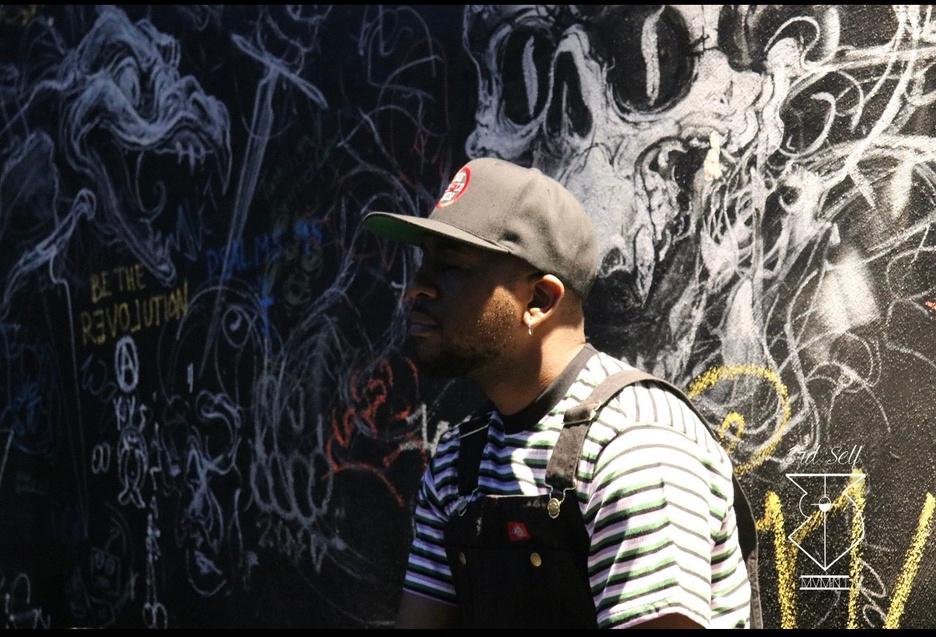
DM: What’s been your greatest accomplishment to date? And what do you hope to accomplish in the future?
JM: I think establi starting my media on this journey, bu having ownership content The fact led me to intervie many legends is a
DM: What’s been you’ve learned a
JM: Own your con neck. Anything an big or small So w watch what you d make or break yo
DM: What advic anyone looking journaling and r
JM: Simply start and stick with it There’s going to be bumps, bruises, setbacks, and rejection but that’s with any career path. Stay the course and focus on why you want to be in this field So many people come and go, but what makes people last is holding on to why they do what they do!
DM: Lastly, what’s your go-to phrase or motto you live by to keep yourself focused on the end goal?
JM: “I have to do things one at a time and I have to take things one day at a time ” Just like DJing, I l t ti d th t’ h t k


DM: Thank you so much for joining us! To start things off, do you mind telling us about yourself?
KJ: Absolutely! I am a Choreographer and Creative Director based in Los Angeles As a child, my family relocated multiple times between New Jersey, Tokyo, Hong Kong and London so when it comes to dance, my creativity and choreography has been heavily influenced by so many different cultures and music

I am so passionate about dance. The history, the evolution and the future of it. I feel even more passionate about teaching dance to anyone who wants to learn Everyone can dance, it’s just a matter of finding out how you translate the music and that’s up to me to find that “vocabulary” for you
I’m excited to say this year is my 20th year teaching dance and my career is naturally transitioning to choreography for music videos, commercials, and television series.
IG: @KKJANS
KAYLAJANSSEN.COM
PHOTOS BY:
STEPHANIE GIRARD
WES KLAIN
DAVID LACHAPELLE
IAN MAXION
The BIG DREAM is to choreograph for a blockbuster film and win an Oscar. We’re definitely on the path towards it!
Current credits include Dua Lipa x Rolling Stone Magazine, The Disney Channel, Rita Ora, G Eazy, Uber and Google

I also teach weekly drop in classes at Millennium Dance Complex in Los Angeles and travel the world organizing master classes and workshops.
DM: How did you first get into dance and what was it like building your career in another country?
KJ: As every child begins to indulge in their hobbies, I found dance at a young age
Picking up choreography was natural for me and when I started watching music videos around the age of 9 (imagine Backstreet Boys, Britney Spears and Spice Girls) I said, “I want to do that, I want to be in those, I want to be there.” I’ve been daydreaming about music videos ever since
I would even catch myself creating a new storyline for the song with some original choreography and costumes From there, I continued dancing no matter what city we ended up in If there wasn’t a dance school, I created a dance club or after-school dance program (as I did in highschool and university) I started my professional dance career in London after graduating from London Metropolitan Business School in London and I went all in.
In the industry I am considered “self trained” meaning I never followed a dance program at University Instead, I would attend drop-in classes and pick up what I could This is where I learned about head shots, resumes and the craft of auditioning That is a different subject on its own!
Landing in LA ten years ago, I had a game plan Get a car, get a flexible side job and then start auditioning. That really worked for me since that’s exactly what I did and I was signed by a dance agency within six months Starting from zero or “nothing” can be very complicated and uncomfortable. As I mentioned previously, I experienced this so many times (either moving countries as a child or starting the local dance club) that it felt like part of the job I got really good at creating something out of nothing. I was open to the work that was needed to build a new network
My biggest tip for anyone starting any endeavor: Consistency and you have to believe in the beauty of your daydream Only you know what it looks like and its potential. Keep showing up
DM: Did you find it hard to adjust to the dance industry in Los Angeles after being in the UK? Or was it a pretty seamless for the most part?
KJ: I think the dance industry on a global scale runs very uniformly. There are auditions, agents, jobs, networking, classes, etc The biggest difference was the grand scale of the scene in Los Angeles. I was always shocked at how many dancers there were in LA vs London or the rest of the world. We’re in the Entertainment Capital of the World. This is where it happens and everyone wants to be here. Also, you ’ re more likely to get sunburned waiting in line rather than rained on.
DM: We often see dancers burn out so quickly in this industry, how have you managed to remain grounded, focused and motivated to keep pushing?
KJ: And I’ve been there! I felt the burn out most when I was working two side-jobs, teaching classes and auditioning weekly. I have learned my burn out was initiated by seeking validation outside of myself I was looking for it in the jobs I booked or the money I made or how many people attended my classes

The Lockdown in 2020 helped me get clear on why I do what I do since all of my distractions and busy-ness stopped I had time to ask myself: Why do I dance? Why do I love teaching people how to dance? Why do I love music and music videos so much? What is it about movement and music that makes me feel electric? What do I really want and how can I get there?
I was able to focus inward and answer all these questions confidently I love making music visual and dedicate my life to creating movement that embodies the music, giving the consumer a new sense to experience this synergy When it comes to teaching, I can see everyone ’ s potential. With that comes being able to see how and where dancers hold back I know I create a supported space for all dancers (beginner to professional) to feel vulnerable as they navigate through the wild world of dance I make my decisions based on my happiness. That’s where the magic lies.
DM: What has been the highlight of your career and what impact did it leave on you?
KJ: Right away, the Dua Lipa gig! That job showed up so randomly for me that I am still in awe at how, what, where. Why random? Without giving too much information and keeping it as clean as possible, I had a mutual friend (who I never met in person) follow me on social media and follow my dance journey

Turns out he was supposed to be the movement director on set for the photoshoot, and he told me that However, I remember him saying “I can fly over there but I want you to be on set. I’ve been watching you teach people dance You love dance, and dance loves you ”
This is proof for anyone reading this, follow your happiness Go where your heart sets alight. People feel your energy and your passion You never know who you ’ re impacting or who’s watching you Keep going Stay consistent.
When I was in that room with Dua and her crew, I knew I belonged I didn’t feel out of place. There was such a fun, playful energy with everyone. Working with her was a dream come true and I think about the whole process regularly.
M: What do you feel like is one of the hardest part of being a dancer, especially in today’s society and world where the internet inherently dictates your worth?
KJ: Exactly that, not allowing external voices, places or things validate your worth or existence This is easier said than done, I understand Find what works for you Find the classes you learn the most from and the people you feel most inspired around Also, resting is progress Resting is part of the job Look after the body and mind, you’ll need it for a while!
DM: You’re also a founding member of the Choreographers Guild which is incredible. Can you tell us more about it and your involvement?
KJ: I am so excited to be part of it! I have always wanted to be part of something larger than myself, part of a movement and something to set the future generations up for success. The idea of the “starving artist” is changing and with all the WGA and SAG strikes currently in Hollywood, the whole industry is being reevaluated.
DM: What’s been your greatest accomplishment to date? And what do you hope to accomplish in the future?
KJ: Right now, being financially independent as a Creative There have been a lot of mindset shifts to get me here A lot of trial and error and starting from zero.
Creatively, I hope to accomplish choreographing an Oscar-winning movie. Simple as that That’s the ultimate goal!
DM: What’s been the greatest lesson you’ve learned as a performer and artist?
KJ: Your intuition is never wrong, create from it. When I prepare for class, I end up choosing a song that catches my attention (think about it, I hear music all day everyday! If something stands out to me, I follow it). When I would have a choreography-block, I would fill it up with a popular move or a “people-pleaser.”
There’s nothing wrong with that, however I felt like it dated my material Recently, I have been focused on creating movement based on my intuition. Don’t analyze, don't overthink it, just add it in Everytime I have created from that space, the choreography feels much more “me!”
I am learning a lot about titles, credits, set requirements and vocabulary. When we have our in-person meetings, I am in awe at the talent in the room These are my colleagues, I have never felt such love and support within a group of entertainers ever. We’re making history!
Listening and working with your intuition is very similar to exercising a muscle. It gets stronger and stronger every time you use it, flex it. It will shape into something very impressive.
DM: What advice would you give to anyone wanting to make their passion a career?
KJ: Do it, I dare you! You are deserving of it. It’ll feel uncomfortable, it’ll make people around you uncomfortable but you ’ re deciding to advocate for yourself . You know that feeling when you JUST KNOW something will work trust that Now you ’ ve decided that, and one thing I wish I did/had when I started, find a mentor or mentorship program I know that is something I felt like I was missing and was searching for in my first few years in LA It’s wonderful to have someone who has been where you want to be. There’s a reason from their success, learn from them!
DM: What is something you’re hoping to achieve this year? And what more can we expect from you?
KJ: We’re half way through the year already, can you believe it? There were a few things I have already achieved this year I am proud of including growing my students numbers in class, creating certain pieces of choreography, working with certain directors and connecting with choreographers I admire
I would love to continue traveling and teaching starting in the Fall 2023. There are already some locations penciled into 2024! Here we go
DM: Lastly, what’s your go-to phrase or motto you live by to keep yourself focused on the end goal
KJ: Just show them Show them what you can do. Show them what you ’ re capable of. Show them what you want to be doing Don't wait for the opportunity, create it yourself
This motto came from the end of 2022 when I had a frustrating week of overthinking and being mean to myself. I had a conversation with my then Agent about a job I didn’t book, where he said, “Kayla, I know you ’ re capable of doing the job. You know you ’ re capable of doing the job. But you have nothing to show for it so when it comes to booking, they’re going to go with the choreographer that can SHOW they have done it.” This industry is about trust, time and money Do they trust you to get the job done in time and under budget?
For the rest of the year, expect more of that! I have found a gorgeous balance between creating from my intuition and connecting with my community.
As I have created my own opportunities and new connections, I have been able to practice making many creative choices and practical solutions These opportunities showed up in short films, working with independent artists’ music videos and professionally filming new ideas for creative concepts and choreography It’s been fun and making new friends along the way is a bonus as well!


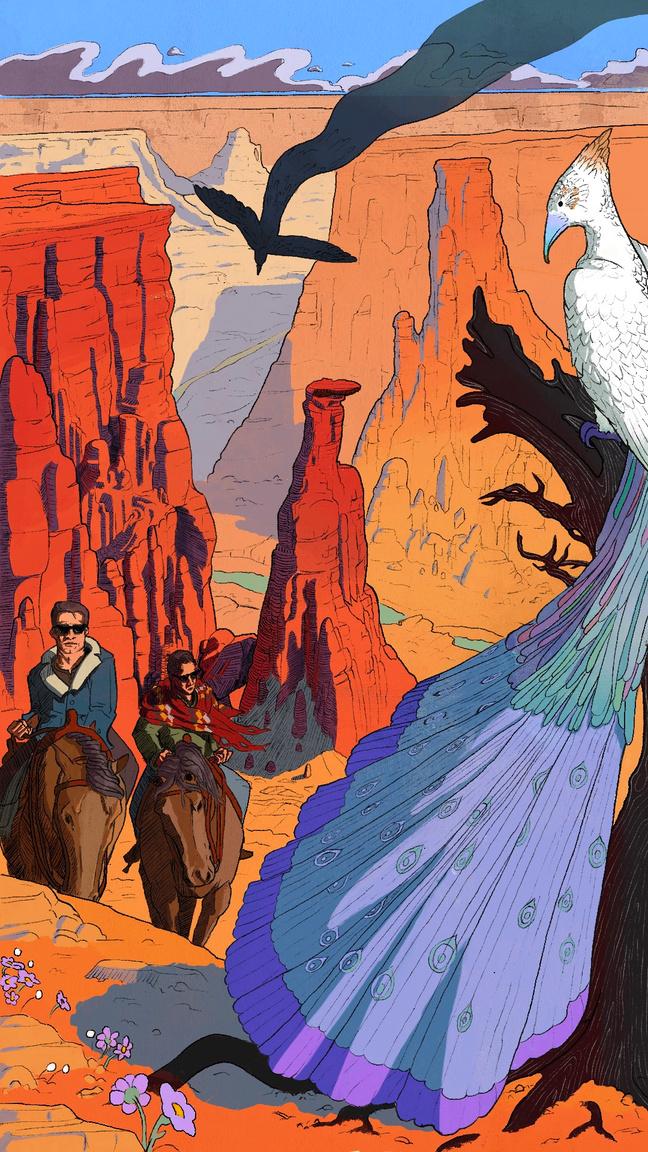
DM: Thank you so much for joining us! To start things off, do you mind telling us about yourself?
XV: Hello! Thank you for having me. I appreciate it Yes, of course I’m Xavier, I work in the tech industry, I make music as my passion, and I love staying active Currently living in Newbury Park, CA, and trying to gig as much as possible this year.
DM: How did you first get started in music? How has your journey looked up until this point?
XV: My earliest life altering experience was when I was vacationing with my family in San Diego The four of us had gone out to dinner and there was this live band playing can’t remember what genre to be honest I just vividly remember one of the guitarists playing and I was absolutely infatuated I must’ve been about 13 or so
I pulled my mom to the side and told her “that’s what I wanna do!” Kind of silly looking back, but that old man cover band really did something for me that night I’d say since then it’s been a very unexpected and surprising series of events that have finally gotten me here
DM: How did you find your style and sound? Who or what influenced it?
XV: I’ve always found myself loving really melodic spacey sounds There is this duo band named Angus & Julia Stone that I think we ’ re direct influences to my sound creation Growing up I only really listened to 50 Cent or any hip-hop my cousins were listening to. Super unrelated, but my mom broke my GUnit CD ‘Beg For Mercy,’ because one of the track titles.

Maybe some sort of hip hop influence also incorporated itself into the beats I use for the demos I make.
DM: As someone who is so genuinely ingrained in the process of your work from start to finish, how to do manage to not let social media influence your sound, process or delivery?
XV: Social media is great for platform sharing but at the end of the day that’s all it really is. I’m not someone who really thinks that a trend or a particular style is something to chase. I like what I think sounds cool and that’s really how I’ve always worked The process can sometimes take a while, but understandably so because I don’t want to create something bad Most of the times though, I tend to get annoyed with 8/10 things I make…. It’s a process
DM: Up until now you’ve mainly been a solo artist, but now you are releasing your next EP and first of your new group Virtual Nobodies. What can we expect from this next EP and how does the sound differ from your solo days?

XV: Oh man this EP from the new project is something I’m VERY excited for You know what’s funny, this upcoming EP I’d say, is closer to my original style and sound than what's being made for my solo project Of course I’m happy for both to blossom, but the creation of these sounds in Virtual Nobodies are very true to me
DM: What do you feel like is one of the hardest part of being a musician, especially with the music industry shifted so heavily towards social media influence as an indicator of up-and-coming talent?
XV: The hardest part I think for me is realizing that this might never go anywhere but I’m okay with that People learn to adapt through the use of social media but that’s not really my style How can I differentiate my artistry without being someone I’m not in this over exaggerated online presence I come across? There’s really not much I can do other than stay true to what feels good to me and take risks when necessary.
DM: If there was one thing you could change about your industry, what would it be?
XV: I’d definitely change the ways local artists can get noticed or just overall better opportunities for musicians
DM: What’s been your greatest accomplishment to date? And what do you hope to accomplish in the future?
XV: You know I’m not quite sure I’m proud of all the musical work I’ve done and yes they’ve been accomplishments in my own way I just don’t feel like it’s been my personal greatest
For the future I’d like to really accomplish something that is more or less universally accepted and enjoyed. There’s something much bigger I want to accomplish, but I’ll let you know if I ever get there
DM: What’s been the greatest lesson you’ve learned as a musician?
XV: To embrace unexpected changes. I’ve gone through this journey thinking things were going to turn out much differently. I’m glad I continue to have the grit and drive to constantly want to create. Things eventually settle and work out in much better ways
DM: What advice would you give to anyone looking to take their music career more serious?
XV: I remember a few years ago I sent a demo to my dad when I was fiddling around with my early demos before I did a solo thing He called me back within 5 min and goes “Boy who told you could sing man X, why don’t you get that singer to sing for these songs that’s in your band because there is no way you can put this out. I mean, the music is cool but wow X.”
That night I almost quit making demos all together I resorted back to thinking “well at least I have my band.” Honestly it was reassuring that I thought I’d always have the band that I was in. I was a bass player, what business did I have trying to make something I wanted? So in a long drawn out response...
I’d say know your strengths, and do not give up an immense desire and feeling just because someone told you to It’s okay to take a step back and reassess, but get back to what you think you can do
DM: What imprint do you want to leave within your industry?
XV: I’d love to be recognized for something beautiful and touching I just really want to have something to create that someone can connect with in a very safe and meaningful way. Just as I crave good songs, I want someone to be into what I can offer
DM: What is something you’re hoping to achieve this year? And what more can we expect from you?
XV: I’m telling you, this Virtual Nobodies project is something that’ll be great. I’m working with Jeremiah Gray (JAAG) and his brother Joseph Gray Both have become very good friends of mine and we ’ re making music we want. There’s going to be a full world of art and style that we ’ re making with this project. This year though, the first Virtual Nobodies EP will be released in late September, so that’s something to really look forward to.
DM: Lastly, what’s your go-to phrase live by to keep yourself focused?
XV: If only fools looked to the mountain high, then I’m a fool till I die


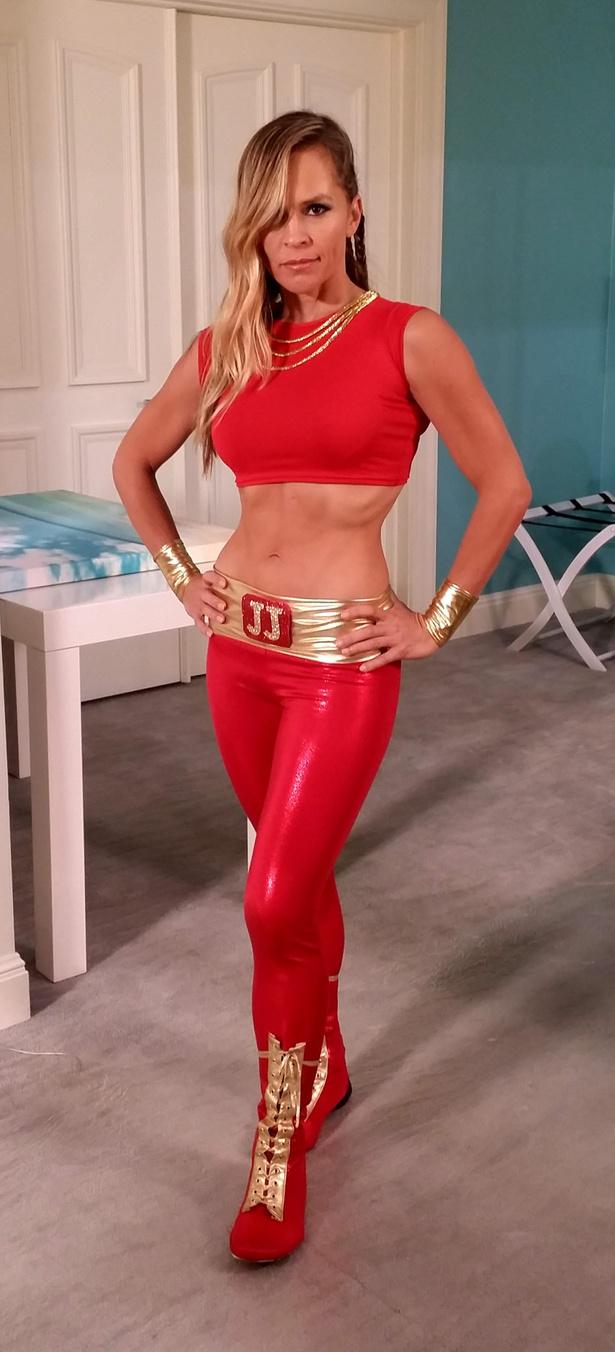 Vander Pluym
Vander Pluym
DM: Thank you so much for joining us! To start things off, do you mind telling us about yourself?
VVP: My saying is “I always check the box marked ‘Other’” Not only because I am mixed ethnicity, but because in life I strive to be constantly expanding the definition of myself. I am a 3rd gen Los Angelina, which means I come from a long line of people who weren’t afraid to go for it. It has allowed my sister and I to grow up in a very empowering environment which I am grateful for I believe it is the reason for all that I am.
DM: As an actress, model, stunt double, performer and so much more, how did you first get started in the entertainment industry?
VVP: When I was younger I was shy, and actually pretty afraid of a lot I even stopped talking for a couple years. But something in me loved performing. I had a vivid imagination with a lot of thoughts and feelings about things and I wanted to share them with people in a “safe” way-by performing.
My mom grew up around the industry and was concerned about having me involved so she didn’t listen when friends told her she should get me an agent It wasn’t until I came to her and said I wanted to do it and explained that the only way I could fulfill her driving rules-we had to earn enough money to buy the car and pay for the insurance-was to act because I was training gymnastics when I wasn’t in school She said “You make a good point” and proceeded to help me find an agent First audition I went on, I booked and got into SAG….and it was all downhill from there. Kidding. But I did only passively pursue acting as I was growing up, Mom said, school and gymnastics come first, so it wasn’t until I finished my engineering degree that I finally focused on acting
DM: Have you seen many shifts in the entertainment industry during your career? What has it been like overall?

VVP: That would be an emphatic YES In the past SAG was more exclusive, difficult to get into Productions needed to prove why they couldn’t use someone who was already in the union, and they had to pay a penalty to use a non-union performer I had unique skills, that’s why I was able to get in
At some point SAG shifted to larger membership numbers (some say because they needed the dollars that came with that) You combine that shift with the birth of streaming and the high demand for content, making the number of series regular and guest star roles increase beyond the supply of performers who had “proved” themselves in that realm, you have a recipe for devaluing the performer and what a quality performance can do for project It becomes all about finding a way to make the most content for the least amount of money and largest impact so people will take notice-wether they get that from being a quality show, or from being splashy.
The public truly holds the future of programming They have to be more discerning to have 5 star meals rather than fast food, otherwise there won’t be any quality programming anymore
DM: You have been JLo’s stunt double for decades now. How did you first get into being a professional stunt double?
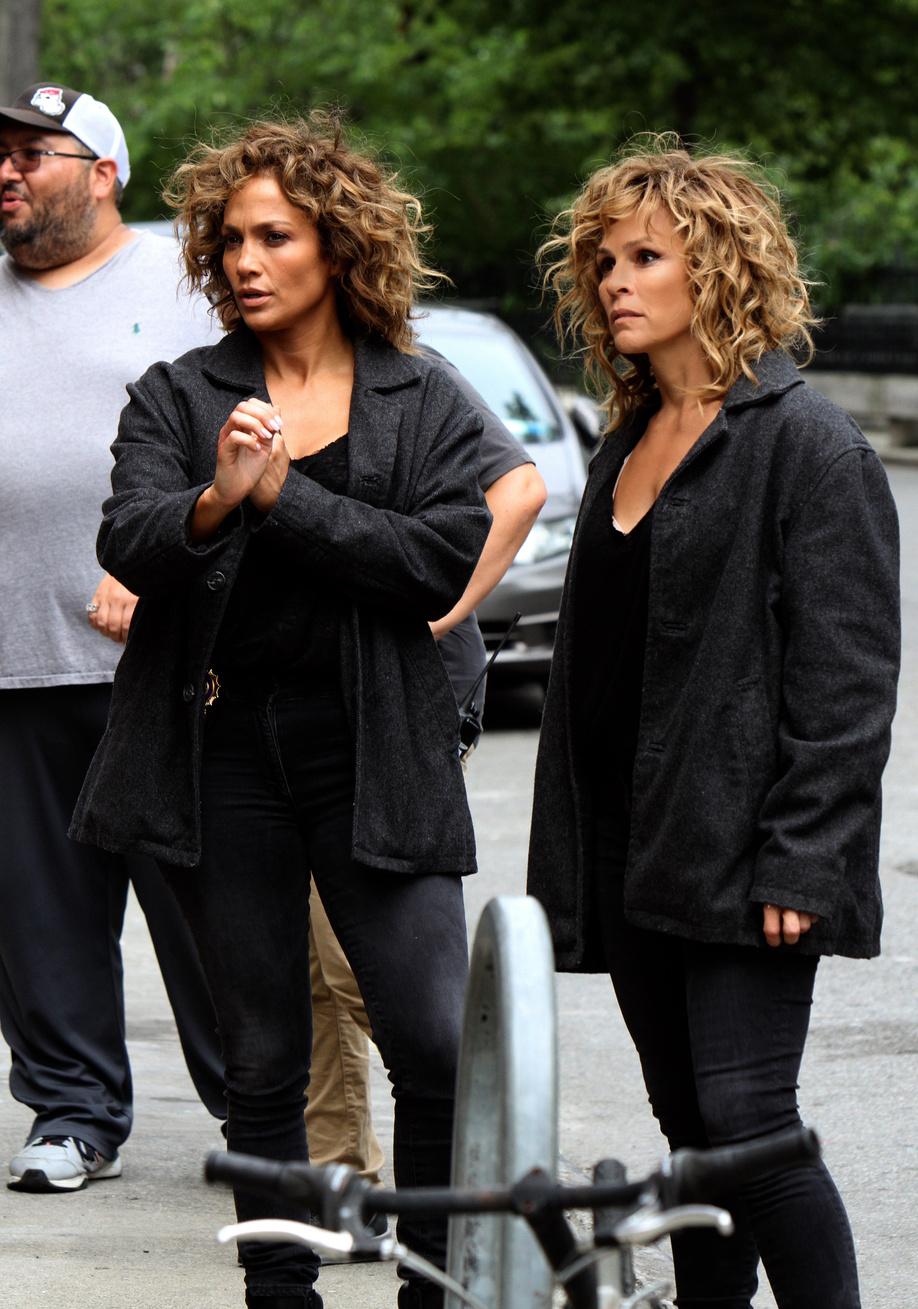
VVP: As I mentioned before, I had a background in sports Ice skating, gymnastics, dance, and then rhythmic gymnastics. I competed for the US for 5 years in rhythmic During that time I was introduced to Tae Kwon Do while at the Olympic Training Center, but it wasn’t until after I finished gymnastics that I really dove into martial arts as well as many other sports and circus.
A gymnastics friend that was coaching in Santa Monica was approached by a motion capture studio, they were looking for a woman that could act and do physical performance, so the friend threw my name in I quickly became a go to girl for badass video game characters. It was there that I really began to understand stunts and meet people like Chad Stahelsk and Dave Leitch, that would mentor me into the business.
As for stunt doubling, well that’s just the luck of having the right look and shape as an actress and having a good reputation so a stunt coordinator hires you for the job It was actually another female performer that I trained TKD with that suggested me for a job doubling Jennifer for the first time I thank her every time I see her.
DM: As a performer, your body is your greatest tool. How do you handle injury prevention and have you ever had to object a stunt?
VVP: The first step is to only work for stunt coordinators we respect and know they know what they are doing. But we don’t always have that choice-when we ’ re starting off or have an actor we double We are constantly thrown into new work situations and have to learn to read people and adapt. Next step is to learn everything you can about the stunt, think of all the possible outcomes and try to make subtle suggestions when you think a stunt won’t end well for you
The best coordinators have very little ego and they listen to their performers In the end the performer is the one who’s has to perform the stunt and if they aren’t comfortable with it, at best it will look weak, at worst they will get hurt or hurt someone else. So keeping an open line of communication is important. And as a performer understanding when you aren’t the best person for the job, not taking jobs that other people are better suited for is key. The worst thing you can do as a performer is take a job you don’t have the skills for Unfortunately not all performers behave that way, and not all coordinators are open to communication
I strive to be that kind of performer and stunt coordinator It’s all about safety and the final product, egos really have no place in that equation So no, I’ve never had to “object” to a stunt because if I take it, I am capable and I always problem solve and work with everyone to make sure that it looks as awesome as possible
As far as injury prevention goes-the key to taking care of your body physically is to be strong AND flexible. Without a balance of those 2 things you are bound to get an injury And sometimes, it’s just inevitable, so eating a diet that supports your body to constantly repair itself, helps when you do get a boo boo.
DM: What would you say is the most challenging part of being a professional stunt double in addition to your own acting career?
VVP: Well…I think we gotta tac on a few more titles to explain the most challenging part I am passionate about a lot of things. My brain never stops dreaming, but I also have the work ethic that comes from being a top level competitor.
When I first started doing stunts I knew it would be a detriment to my acting career because production/casting immediately thinks that all of your credits are because you are a stunt person There is a bias there And stunt coordinators instantly think you are failing at acting and are trying to use stunts as a way to get into acting I have been asked on more than 1 occasion “ are you a stunt person or an actress” The first time I was asked that, I was so confused by the question and I answered “I’m an over-achiever, what are you?”
That answer stuck You say it vey matter of fact-it causes people to re-evaluate their assumptions Sometimes I throw in “I also have a mechanical aerospace engineering degree It is a little cocky but it allows the conversation to go elsewhere Much of the business is about standing up for yourself, but doing so in a way that doesn’t make others feel bad about themselves If you can convert someone, you will have a person out there that will champion you when you ’ re not there to stand up for yourself.
DM: What has your experience been like with so much physical athleticism required of you? Has a stunt ever gone totally wrong?
VVP: Every day for years and years I have challenged myself physically I don’t believe in resting on your laurels.
Stunts is absolutely a state of mind Ever since I was a kid I would try things and fail and naturally bail out. The more of those kinds of experiences you have the more likely you are to save yourself when things do go terribly wrong. The times I’ve had that “Oh shit, so this is how I die” moment, it wasn’t doing a paid stunt Like the time I got run over by a garbage truck while biking in NYC. The immediate follow up thought is “hell no, how do I save myself” Your brain can work so quickly, you legit feel yourself in the matrix. The years of experience, my own and watching, studying, and speaking to others, helps to prep you with thoughts, solutions, for those moments
I had a moment when I was walking into the post office realized I forgot something was headed back to my car when I heard a car make a noise that didn’t sit right in my subconscious It was accelerating into a parking spot and out of it, over the sidewalk and into the front window of the post office, turned right and slammed into a safe The accelerator had gotten stuck I was like a robot, processing data, I was out of the way, watched it, walked through the broken window (in platform sandals) looked for leaks, saw the elderly lady couldn’t get out, found passage into the car and was able to get her safely out on the sidewalk without the slightest elevation in my heart rate.
It kind of creeped me out when I thought about it later But this is what we are trained to do, remain calm, think clearly and keep everyone safe.
DM: What’s been your greatest accomplishment to date? And what do you hope to accomplish in the future?
VVP: That’s a difficult one. I have had a few chapters in this life, and accomplishments in each one I’d say my biggest accomplishment is every day when I keep going while staying true to who I am The world can be harsh, there are people who want to see you fail and actively campaign against you because it’s easier than tti it ll th li th l

Getting up every day with love in my heart, shrugging off that burden of their insecurities to free myself to work towards my goals with an ease of mind, while also supporting others, friends and strangers, in the pursuit of their goals, That is what I am most proud of

The future holds a lot of possibilities I’m excited to be creating more, as a stunt coordinator, writer, and director. On the side I have been developing some projects I have had in my book of ideas for a while I’m submitting a couple of patents, taking meetings with investors. It has been a whole different world, one that leaves me feeling a bit more in control of my work life, because the hard work has a more direct pay off. Of course I will always be a performer whenever I am afforded the opportunity.
DM: What’s been the greatest lesson you’ve learned as a performer and entertainer?
VVP: To say “No” I think it is a lesson everyone needs to learn but as a performer we are taught to say yes Yes and We are taught that we are only as relevant as the job we are currently promoting or working on, and-the most damaging thing we are told-that we are expendable Knowing your worth and saying “No” when you are not being treated with the respect you have earned is one of the scariest yet most empowering things you can do
Believing enough in yourself that you know- if this one doesn’t work out, there will be another one. You don’t have to prove your worth to anyone, there will be another job because you are worthy
When I had the realization that I will be “ok” because I don’t actually need this business, I am capable of succeeding and finding happiness anywhere, I exhaled and I was at peace. There are times I have to remind myself of that lesson, but the more I do, the more resolved I become in that belief.
DM: What advice would you give to anyone looking to get into the entertainment industry?
VVP: The cliche advice is, if there’s anything else you can see yourself doing, do it Hopefully you have picked up, that’s not my motto, but the passion implied is. I could not see myself NOT doing it You have to want to perform more than your fear of failure and rejection. You have to want to be a storyteller more than you want to be loved by the masses
You should want to reach people through the magic of the “moving picture” more than you want to be rich. If you do this because you are driven by money, fame, to prove something to the kids that bullied you, or the girl/guy that rejected you in high school, you will always be left with an emptiness It can’t fix you
Every rejection will deplete you rather than be a stepping stone to greatness You will become so damaged you hurt others in your personal and professional life Be here because you have something to give, not to take. And if you are here to give of yourself, don’t ever take “No” as a definitive answerjust keep going, working on skills, asking questions, gaining insight from everyone you meet in the business and never lose that belief in yourself Get up every day with joy for the choice you have made to be an artist.
DM: What imprint do you want to leave within your industry but more so the community at large?
VVP: Grand scheme-I would love to help change it for the better I have realized in life that I am a catalyst. I’ve been that way ever since I can remember.
I have had pretty extreme reactions to who I am. While it can be difficult it is also extremely rewarding when I reach people, or a group of people and aid in their journey to grow
Change needs to happen in our industry, there needs to be a shift towards respect for all involved in the process. I saw that as a child, and told my mom that one day I was going to have a production company where you had to treat everyone with respect or you would be gone-well maybe you got one talking to and then you were gone
The industry is worse than ever and it must change Certain positions in the industry have been abused for far too long and it’s bubbling up in people I can’t change it on my own, but I would love to be a part of a swell that shifts the tide.
I want to be one of many performers/creators that are stepping up to lead and are doing so with kindness.
DM: What is something you’re hopin achieve this year? And what more c expect from you?


VVP: As far as entertainment goes, I’m working on some projects I’ve been developing. I just got some gear to sho with-excited about that. Can’t really ta about any of it, but I promise everythin up to eventually goes up on my instagr even the random stuff like designing a building furniture or roller skating w m So stop by @mental skate if you like e things you find in a thrift store, cause t my vibe
DM: Lastly, what’s your go-to phrase motto you live by to keep yourself fo on the end goal?
VVP: To enjoy the full flavor of life, alwa


DM: Thank you so much for joining us! To start things off, do you mind telling us about yourself?
MD: Hey! My name is Mark Daftari, born and raised in Newbury Park, CA. I started dancing in high school, and after only three years of training, I continued at the USC Glorya Kaufman School of Dance. Since graduating in 2019, I’ve been working in the industry and am represented by an agency. Now, I am dancing as well as choreographing and teaching around the world from Mexico City to Australia!

DM: What has your dance journey been like? How did you first get into dance, and how have you navigated your way towards making it a career?
MD: Honestly, I’ve always wanted to dance since I was a kid, but once I could pay for it myself in high school that’s when I took the initiative and began my training.
IG: @MARKDAFTARI PHOTOGRAPHY CREDITS: LEE GUMBS WES KLAINMy dance journey has been such a long process and has taught me patience for sure Since starting a bit later, it felt like more of an emotional journey.
There are days when I feel like the underdog and other days of feeling like I’m on top. After years of focusing on confidence and consistency, those days of feeling like the underdog are long gone now. But we all start somewhere! And I was hungry to be the best
DM: What’s been your favorite gig so far? How did it come to be and what was the process like?
MD: My absolute favorite and memorable gig thus far would have to be working with Parris Goebel in Sam Smith's music video “How Do You Sleep?”

This was my first gig out of college as a professional, and I remember walking into the room with all these icons I was just so happy to be included in the project. It was directly booked, meaning my agent shared some videos with Parris, and from there she wanted me on board!
The plan was that we were supposed to be in heels but ended up just wearing boots The overall process was smooth, and seeing how her mind works in a rehearsal setting was eye-opening and inspiring
DM: The dance industry has shifted so much over the last decade with social media taking such precedence on bookings, how have you managed to build up not only a following but maintain the balance between dance being a passion and also a job requiring a following?
MD: Dance has shifted even since the pandemic. I noticed a huge change once things started picking back up in 2021 Social media is very important now, and Instagram is basically a visual resume. I personally do not make as many videos as I should But to showcase my art, I will post professional dance footage from class or live shows! I’ve managed to build a following from other choreographers and from continuing to bond with my followers.
DM: What do you feel like you bring to this industry that is unique from others? How have you found your “thing” that allows you to stand out?
MD: I think what I bring to this industry is a bit different from others In my opinion, even though heels and feminine energy is a common theme with men these days, I think I add my own spin on it
That spin includes utilizing my technical side to approach industry choreography Full body rather than just arms or legs, but the arms and legs initiated by my sternum or my back or my hips, as an example
I like to challenge myself to stand out in the room, blend in if necessary, but stand out by using other parts of my body within the choreography; such as my sternum throughout my movement so it looks more breathy to the eye. Using other body parts but not taking advantage of it, still doing the choreography that’s given to me or that I create, but making it unique to how I move.
DM: What do you feel is one of the hardest parts of being a professional dancer?

Now I find that the more I post and engage, the more likely I am to receive a DM about a job But I use Instagram as a form of sharing my passion instead of focusing on likes and engagement; easier said than practiced. I post what I like and what I know looks best on me and not what people want to see
MD: The hardest part is the industry itself, it’s not always the most reliable financially. So there are some months where the jobs are flooding at once, and other months I need to search for a regular job because of the slow season.
DM: If there was one thing you could change about your industry, what would it be?
MD: I would change a few things, but one big thing that I always get frustrated with is the speed of payment after a job is finished. It sometimes takes MONTHS for dancers to get a paycheck! That’s unfair, but also hard to control since it’s not so much associated with the industry
DM: What’s been your greatest accomplishment to date? And what do you hope to accomplish in the future?
MD: One of my biggest accomplishments still to this day was my college acceptance into USC! I was only dancing for 2-3 years before I got accepted. I’ll never forget that moment when I found out It was shocking, but also, my hard work paid off. I got accepted into one of the best and most competitive dance schools in the country
DM: What’s been the greatest lesson you’ve learned from being in the entertainment industry?
MD: The biggest lesson for me is that energy and positivity go a long way. I know that when I socialize and create connections within the dance community, put the ego aside because that takes you nowhere and bring out your authentic self. That alone will get you far and continuously working and being a light to this industry
DM: What advice would you give to anyone looking to make a career out of dance?
MD: Keep your head up during the hardest times There will be moments of silence and you’ll wonder, am I even good enough? Get that out of your head, keep manifesting and trusting the process With that in mind, and of course hard work, that will take your career to the next level. One thing I want to add is self love. Dancers can sometimes critique themselves a little too hard It’s good to watch yourself and see what you can improve, but give yourself credit for always putting in the effort!
DM: Lastly, what’s your go-to phrase or motto you live by to keep yourself focused on the end goal?
MD: I stay thankful for my talent and body, the fact that I can wake up everyday and dance is such a euphoric and therapeutic feeling, and not everyone has that. So I just remind myself whenever I’m going through a hard time or a bump in the road, to always stay grateful and to remember why I started dancing in the first place Once you make that a habit, then the end goal will be a lot easier to achieve, and much more enjoyable. We get so lost in our goals at times and we forget why we love it so much. So, patience and the goal will come with a positive mindset, a positive attitude, and positive energy and of course hard work PS Easier said than done, so if that’s the case Take classes that feed your soul for a bit. That’s what I do when I’m feeling down Changes everything!
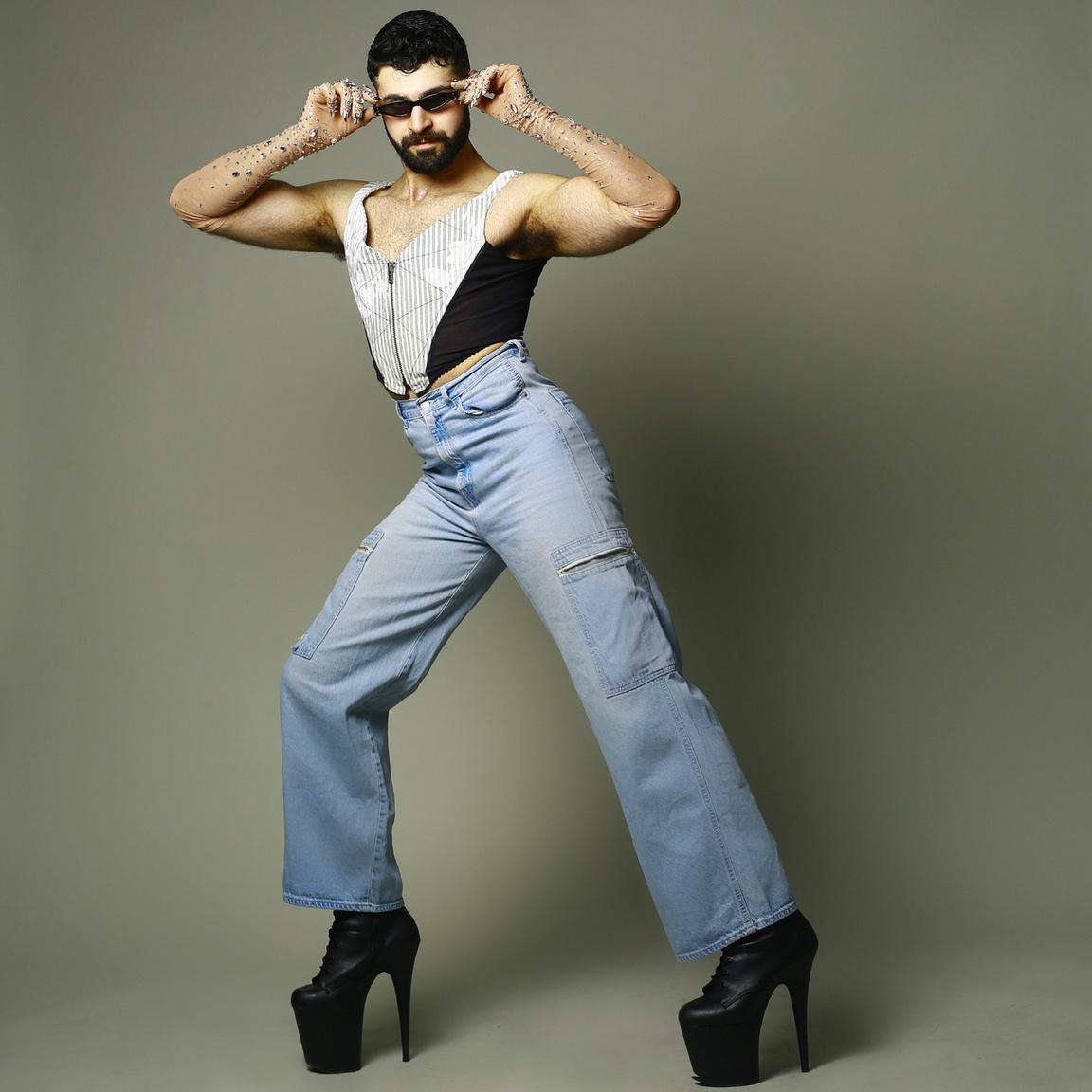

DM: Thank you so much for us! To start things off, do yo telling us about yourself?
AB: Thank you so much for ha I am a multi-passionate creati works in casting, managemen modeling, and acting
I have worked as a model for years, and have been a busine for five years. I created a castin company and a model agenc Collective Casting We are bas Brooklyn, New York
DM: How did Collective Cast come to be? What was the behind creating this casting agency?
AB: My business started throu own experiences as a Black m living in New York City and try a part of the modeling indust rejected from every agency op had gone to

COLLECTIVECASTING CO
CREDITS:
TRAVIS MATTHEWS
MANISHA W
TOWN STUDIOS
CASSIE SISKOVIC DEMAR WATSON
IG: @COLLECTIVECASTINGI started in New York when models of color were in a phase of living in a Jim Crow world I will never forget the agencies that told me directly they were not looking for ‘ethnic’ models or the auditions for companies that told us they were not looking for Black models I noticed on the agency boards that they only represented a few different types of talent, and I noticed a tokenization, especially of people of color at the agencies, and I knew in my heart that something had to change
I ended up being signed to a commercial agency where I worked full-time as a model and learned what a great agent looks like, how to maintain bookings, how to keep clients and how to build relationships in the business After working full-time as a model, I felt like I was constantly being tokenized as the token Black girl

I was almost disgusted with the state of the media and the state of the industry at the time, that in my soul, I just didn’t feel right not to do anything about it. I knew that there were no major agencies that were going to wake up and overnight represent the diaspora of models and talent that stem from countries outside of the European beauty standard
I had so many friends that didn’t have representation that were stunning and extremely talented models that just weren’t given access to the right opportunities, and I knew that I could help them I started helping my friends by connecting them to opportunities for free for a very long time, and I got to the point where my friends were telling me straight up I need to start my own agency and start a business.
We cast models/actors and also represent a division of agency models across the country, whereas most agencies do either one or the other We also have a diverse client roster that stems anywhere from music videos to high-end beauty brands

DM: How have you found such success with your agency? What do you think is the unique edge your company has that others may not?
AB: I’m honestly not sure how to answer this question I truly feel like I’m just getting started, and I’m really excited about what the future holds for my business. As someone that has always dreamed of working in these spaces, I think that as my business grew, I was so eager and openminded to the work I was being asked to do I mean, how many times do you get asked to cast a Madonna music video in your life?
I think a unique edge that my company has that others may not is that we have a blended business model
I am also very open to models working at other companies with other agencies because I believe in the right to work At other agencies, most models are in exclusive contracts, and they’re not allowed to work with any other agencies that are in the same market I understand, as an agent, why they would want to have exclusivity if you have the same clients, but this limits the opportunities and the income streams for the model that they potentially have for their career. There is an abundance for everyone
DM: With castings for Essence, NYFW, Madonna, Pravana, Snipes, Footlocker and more, how do you manage to have such a diverse pool of jobs for your clients?
AB: As a model and actress, over time I developed relationships with a lot of people in the industry Kindness and just being a friendly, genuine spirit can take you a long way. I am also a hustler. I am intelligent, aggressive, assertive, and I am not afraid to ask for things I or the talent need. The majority of my business is based on referrals that executives, directors, and producers send to me I still pitch and cold email, but the consistency has been through working with the same people on several different projects
DM: Was the journey in building your casting agency a difficult one? Or did you find it to be organic and seamless?
AB: Everything has been a journey, and nothing was easy, but it did feel very natural Even starting the business itself, mentally, I went through a lot to convince myself not to do it There was something inside me that told me; this is not something you want to do; this is something you have to do There are so many major agencies that run the business that I had to overcome my mental obstacles to reach my reality.
I will never forget the day when I left an open call crying because I was again rejected due to my complexion and my hips being too big. My spirit was telling me, ‘Start the business; this is a protest.’ I battled with wanting to be a part of major agencies, and I remember walking down the street and seeing about 20 different lamp stores all on the same street I thought, are people really buying this many lamps?
Well, if this works for lamps, this has got to work for models in New York City of all places, right? It was at that moment that I felt that abundance was mine for the taking I just have to build it.
AB: As a Black business owner, sometimes I feel that diversity optics can be gimmicky, and I find myself questioning the integrity of projects that major brands have that involve talent of color. The balance between doing the work and questioning if we are being exploited because we are the talent of color is something I always bring to attention if I do feel it's happening
Social media is a great resource for me, and I do use it to my advantage when I am running a business I think it could be an intimidating landscape, but literally, everything in business can be intimidating for someone that has never done it before I am pretty fearless, and so at this point, I have done so many ‘ scary ’ things; when I see an obstacle, my brain thinks of ways to overcome it I am still very strategic, but I try not to hold onto fear too long.
DM: If there was one thing you could change about your industry, what would it be?
DM: What do you feel like is one of the hardest part of being an entrepreneur, especially in an industry so motivated by social media?
AB: If I could change anything in the industry, I think that I would change the dynamics of power within the companies. I would want more women in power, and I would want more people of color at agencies making decisions. Oftentimes when I’m on site I am the only Black woman in a position of power on the crew I am totally in support of more control, for people to have power and more equity in the industry. We can actively implement the change we wish to see
st
d what do e future?
the bookings
eally hard to
g with Savage
e for a while, as one of my ure the full-time.
anything Issa yoncé is

t any time of t lesson eneur?
eur, I am and new
e virtues like bility have in my give to odeling?
ve is key. The of your
r self-esteem.
Modeling requires a certain level of confidence, vulnerability, and persistence that shouldn’t be stopped by things as minuscule as measurements. If you will always beat yourself up over your weight, height, or anything, you will constantly be in battle, no matter what campaigns you book.
For people that want to get involved in modeling, I also think that it’s important that they understand their intentions of why they are wanting to model I think that it’s important to understand whether you ’ re just wanting to create art, create a care maintain a revenue and income str through modeling. If you are truly t turn this into a profitable business, to take your materials, portfolio, and development seriously. I think also open-minded to learning in your ca not everything you see on the Inter good advice and applies to your de seen TikToks with millions of views advice Sometimes your dreams req to simply follow your instincts and n else.
DM: What imprint do you want to within your industry?
AB: I hope that by the time I’m read retire, there are a bunch of Collectiv Castings everywhere Not in the sen franchising but in the sense that wh doing is just normal. Representatio people should be the standard The full of color
I want to leave knowing Black models can be safe and that there are no longer Black models being discriminated against & mistreated through the hair and makeup industry.

DM: Lastly, what’s your go-to phrase or motto you live by to keep yourself focused on the end goal?
AB: NO MENTAL BARRIERS. It doesn’t matterfind a way

A R T + C U L T U R E


THE LARGEST GROWING CONTENT FORM IS DIRECT MESSAGING NOT CONTENT
BRAND ACTIVISM IS TAKING PROMINENCE
NOSTALGIA IS THE TREND TO RIDE IN ALL AREAS OF ENTERTAINMENT AND CULTURE


THE ART INDUSTRY WILL CONTINUE TO LEAN INTO DIGITAL ART REALMS
NFT'S TAKE ON THE TOKEN GAME FOR STAYING POWER


IAs the entertainment industry evolves post-pandemic, traditional in-person events like concerts are increasingly feeling the pressure to deliver more to keep up with the times
We live in an era where every concertgoer is a potential content creator, turning their experiences into user-generated content (UGC) with a global reach
As a result, concerts and live events are having to produce more extensive sets, grander costumes, and enhanced visual appeal to captivate audiences, both present at the venue and virtually.
For decades, in-person concerts were primarily about the music, with the artist's performance being the centerpiece of the event. However, modern audiences have broadened their expectations. They now seek a complete sensory experience - one that incorporates visual elements, technology, artistry, and the music itself into a seamless and immersive spectacle
In the age of Instagram, TikTok, and virtual reality, concerts are becoming larger-than-life experiences, and it's not just about hearing anymore; it's about seeing and sharing

Artists and concert organizers are capitalizing on the fact that they're not just creating a concert but producing shareable content.
In our hyper-connected world, every fan in the audience wields a smartphone, ready to capture moments of the event to share on their social media platforms

This UGC is a powerful marketing tool It offers a genuine, unfiltered view of the event, extending its reach to millions who weren't present in the venue. The immediacy and authenticity of UGC give it a powerful sway over modern consumers, often driving future ticket sales and generating a buzz that no amount of traditional advertising can replicate
The importance of visual appeal in this new landscape cannot be overstated. Artists and event organizers are pushing the boundaries of creativity in set design and costumes, generating awe-inspiring visuals that fans rush to share with their followers The concert stage has become a canvas for artists to communicate their persona and artistry.
We see this most recently with Beyoncé's Club Renaissance Tour and the elaborate intricacy of the production All of her stage elements don't just complement the music; they amplify the spectacle and make the concert a memorable event
The sets and costumes have become integral elements of the show, encapsulating the concert's theme and amplifying the artist's message. The ability to adapt, evolve, and innovate in these areas plays a crucial role in keeping audiences engaged and coming back for more

In addition to impressive sets and costumes, technological advancements have allowed further amplification of the concert experience
From pyrotechnics to holograms and VR experiences, the bar for what's possible at live events continues to rise.
The focus is on creating moments - moments that are shared, liked, and retweeted, propelling the event far beyond the confines of the concert venue
Consequently, the production of a concert has evolved into a symbiotic relationship between the artists, the audience, and technology. The artists create the spectacle, the audience amplifies it, and technology enables it.

More and more, artists find themselves navigating an intricate web of challenges when taking their talents and turning them into profits The rise of social media and the increasing demand for consistent content has placed unique pressure on creatives to balance their artistic passion with the practicality of running a business.
Striking the proper equilibrium between artistic expression and business growth can be an overwhelming task, but it is essential for artists to stay relevant and succeed in this competitive landscape
Between the difficulties artists face in keeping up with the demands of their craft, the constant need for fresh work to maintain their social media presence, and the never-ending loop of trends, we want to provide some valuable tips on how to balance scaling a creative business while preserving the passion that fuels the art
The Perils of the Digital Age for Artists:

The digital age has revolutionized the art world, offering both opportunities and challenges for artists. Social media platforms like Instagram, Twitter, and TikTok have become vital tools for artists to showcase their work and connect with their audience on a global scale
While these platforms have democratized art distribution, they have also given rise to an overwhelming demand for consistent content to keep followers engaged.
While the opportunities have increased, so have the demands, and more often than not, artists feel compelled to produce new artwork frequently, leading to a risk of burnout and compromising the depth and quality of their creations
Moreover, the emphasis on "viral" content and social media algorithms can discourage artists from experimenting with niche or unconventional styles
he pressure to create content that will appeal to a broader audience can stifle their creativity, leading to a paradox where the pursuit of popularity can distance artists from their artistic vision.
Balancing the demands of a creative business while maintaining artistic passion is undoubtedly challenging, but it is not impossible
Effective time management is the backbone of any successful endeavor. Allocating specific blocks of time for creating art, engaging on social media, and handling the administrative aspects of the business should be blocked out for time efficiency
By establishing a structured routine, our creative friends can ensure they have ample time to express their creativity while still meeting the demands of their growing business.
As those demands grow, setting clear and attainable goals for creative output and business growth is imperative
While it's easier said than done, having the mentality to challenge oneself of unrealistic expectations can lead to disappointment and burnout. Breaking down long-term objectives into smaller, achievable milestones makes it easier to progress steadily and sustainably
In a sea of content, authenticity is a powerful differentiator. By focusing on nurturing the unique brand voice and artistic vision, you'll still be able to find your place online, even if it might not cater to mainstream trends.
When the work is genuine and resonates with your values, it will naturally connect with a dedicated audience
You should approach these platforms strategically rather than feeling enslaved by social media. Instead of obsessing over follower counts and likes, prioritize engagement and meaningful connections Engaging with followers, collaborating with other artists, and sharing behind-the-scenes glimpses can humanize the artist and foster a loyal fanbase
Artists may find it beneficial to delegate non-creative tasks, such as social media management, accounting, or marketing, to professionals or reliable team members This allows you to focus on your craft without getting overwhelmed by the administrative side of the business
When you outsource the monotony of your business, it opens up the world of collaborations. Collaborating with other artists, businesses, or influencers can expand your reach and introduce your work to new audiences
Networking within the art community can also lead to valuable opportunities and partnerships contributing to business growth.
Now, while all this feels like a lot, you also need to recognize the importance of selfcare and mental well-being Balancing business demands with artistic passion can be emotionally draining, so taking time to rest, recharge, and pursue other interests is essential for maintaining creativity and avoiding burnout.
Throughout the journey of scaling a creative business, artists must remind themselves of their initial passion and artistic vision Staying true to these roots can serve as a compass in times of uncertainty, guiding you back to your core values and driving force.
Balancing business as an artist is a delicate dance that requires dedication, creativity, and strategic thinking. The demands of social media and the pressure to constantly produce new work can challenge even the most seasoned artists

However, artists can find harmony between their creative passion and business aspirations by embracing time management, setting realistic goals, nurturing their unique voice, and leveraging social media strategically
Through collaboration, networking, and prioritizing self-care, artists can scale their creative ventures without losing touch with the very essence of what drives them their love for art. In this dynamic and ever-changing landscape, the key to success lies in striking that perfect balance

where
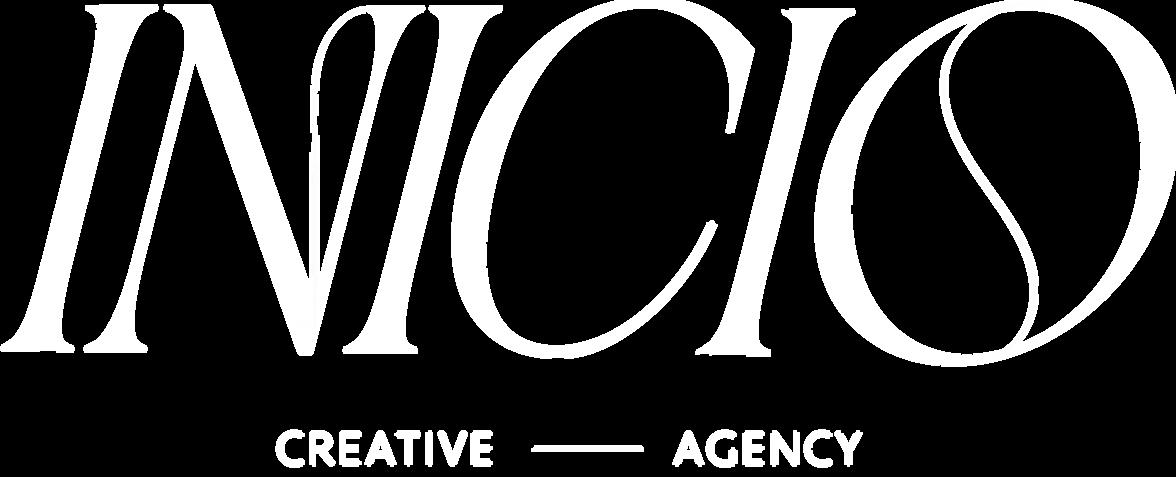

impact, innovation + influence meet to bring you highly conceptual brands


